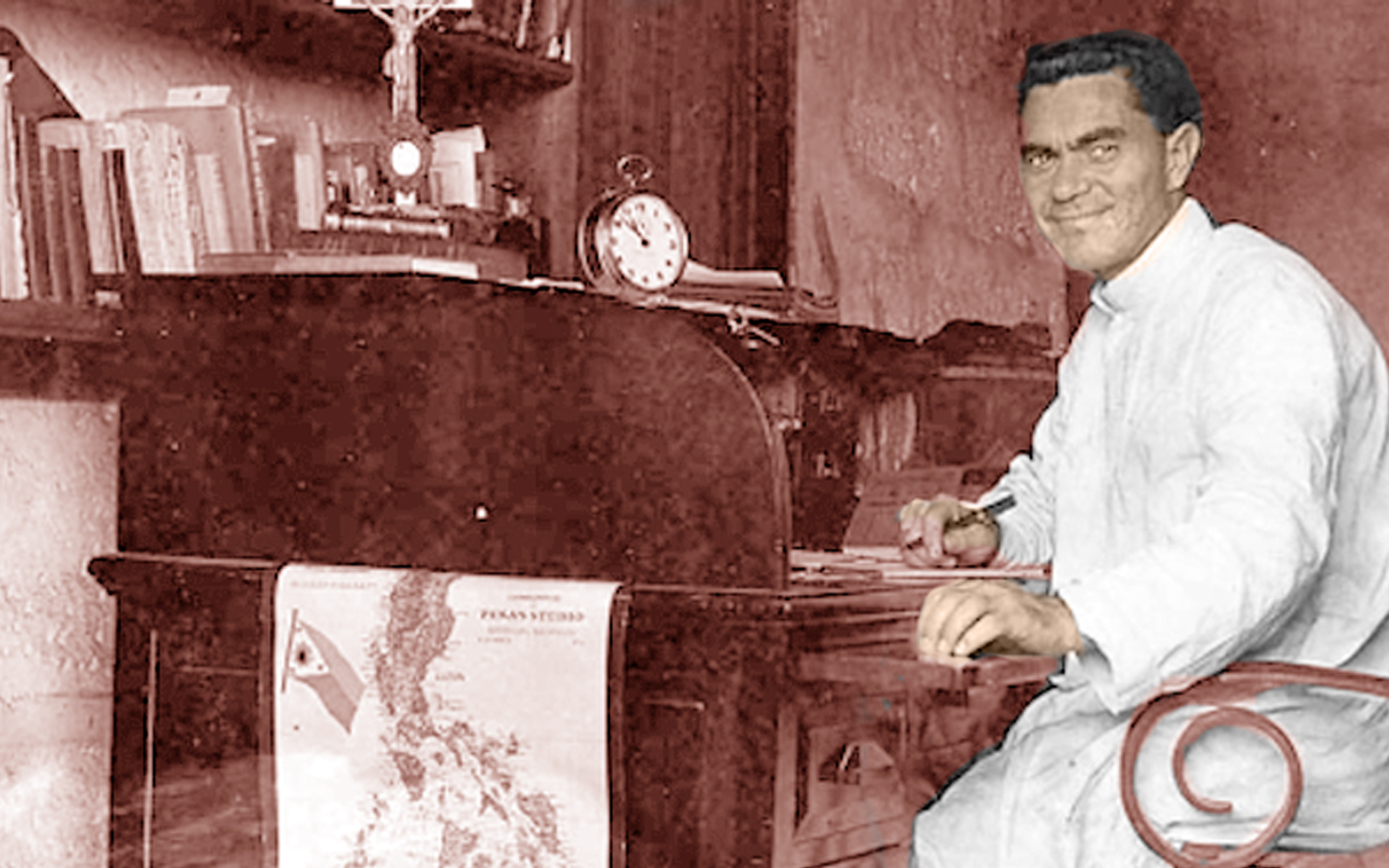
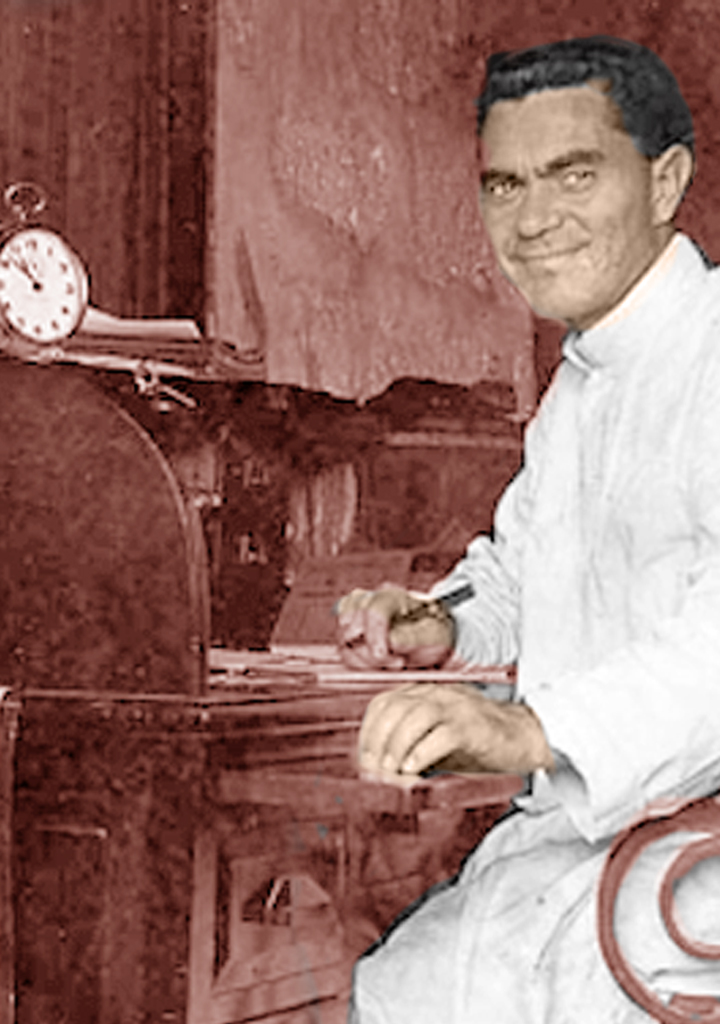
THE STORY OF
THE PROVINCE
The St. Joseph Province in the Philippines is the first mission of the Congregation of the Oblates of St. Joseph outside Italy which started in 1915 and was established as a Province in 1987.
Art. 1, Provincial Directory
St. Joseph Province 2021
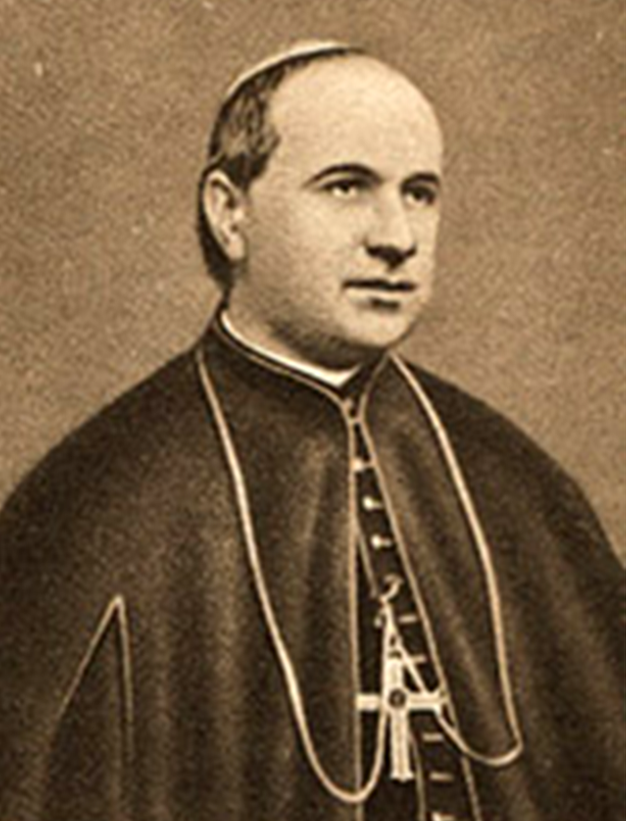
St. Joseph Marello
The story of the Oblates of Saint Joseph in the Philippines may be said to be truly providential. It is a realization of the words of their founder, St. Joseph Marello, as he asked their Patron for guidance: "Joseph, show us the way, support us at every step, lead us where Divine Providence wants us to arrive."
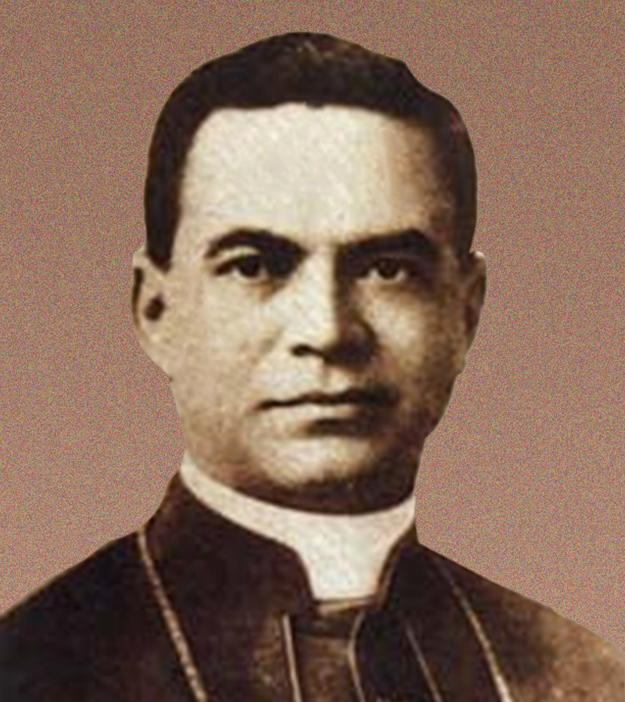
Msgr. Giuseppe Petrelli, D.D.
First Bishop of Lipa
With the dwindling number of priests, the first bishop of the Diocese of Lipa, Msgr. Giuseppe Petrelli, DD, had to look for ministerial assistance in Italy. At first he sought the Giuseppini di Murialdo. But, its superior. Fr. Eugenio Reffo, declining the invitation, recommended to the good bishop the OSJ: "they are our good friends, few in number but full of good spirit and apostolic zeal."
Being relatively new to the idea of sending missionaries, Rev. Fr. Giovanni Battista Cortona, OSJ rector major, together with Fr. Carandino even had to consult Pope Benedict XV. The response of His holiness gave them assurance to where Divine Providence was leading the young congregation:
"If they go, they do me a true favor, and I give them my blessing with all my heart."
To the Far East
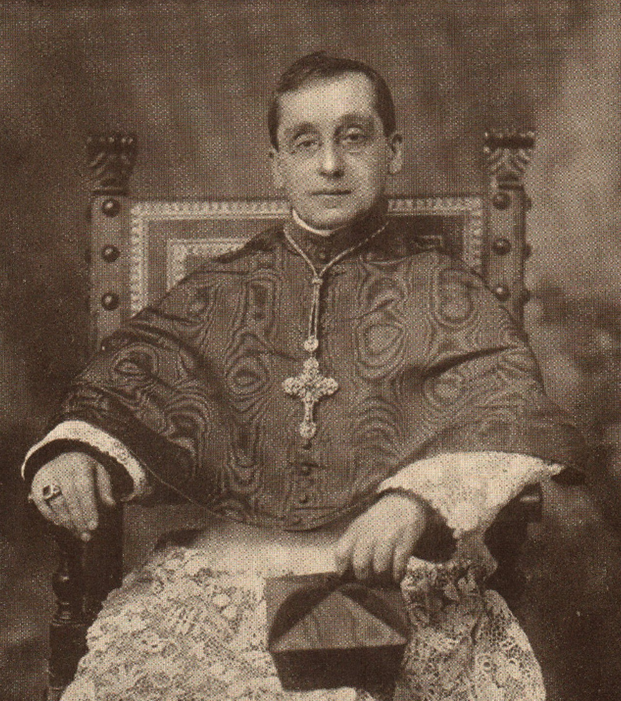
Pope Benedict XV
The Oblates of Saint Joseph left Italy for missionary work in the Philippines on July of 1915. The first five OSJ Missionaries were Rev. Fr. Giueseppe Anfossi, OSJ, Rev. Fr. Ernesto Fornaco, OSJ, Rev. Fr. Eugenio Gherlone, OSJ, Br. Giuseppe Maccagno, OSJ and Br. Giovanni Battista Camera, OSJ.
They arrived in the Diocese of Lipa on August 26, 1915, particularly at the train station of San Jose de Malaking Tubig. The parish of San Jose became the central house of the Congregation in the Philippines, as decreed by Bishop Petrelli: "In the meantime they could reside in the parish house of San Jose (the central parish that I will give to the dear Oblates of St. Joseph, a few minutes by train from Lipa), and offer from there the ministerial services they can easily carry out." The five OSJs were greeted by a large crowd of boys from the Escuela Catolica and by the festive tolling of the seven bells of the Church.Thus the seed of faith and of the mission was planted.
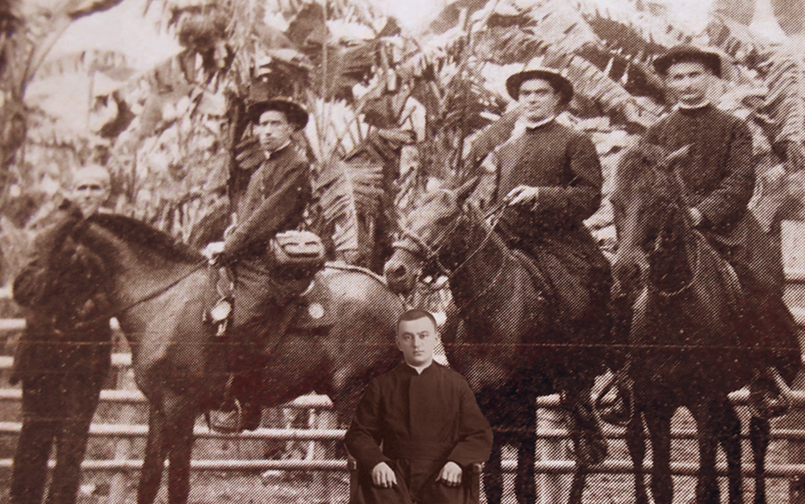
Fr. Maccagno, Fr. Anfossi, Br. Camara,
Fr. Fornaca and Fr. Gherlone
Six parishes were initially entrusted to the first missionaries: San Jose, Cuenca, Ibaan, Rosario, Taysan and Lobo. The following year, the parish of Alitagtag was also entrusted to them.
With the magnititude of their responsibilities at hand, they had sought numerous times to send additional confreres to respond the pastoral demands of the faithful. The tediousness of the mission was proven through three heartbreaking moments: the deaths of Br. Maccagno on July 9, 1919 and of Fr. Anfossi on August 20, 1921; and the departure from the Congregation of Br. Camera in 1922.

Msgr. Alfredo Verzosa, DD.
Bishop of Lipa from 1916-1951
The Next Ten Years
The long awaited reinforcements did came in 1921. The second batch was composed of one priest and two clerics: Fr. Vincenzo Prandi, Ch. Giovanni Boccignone (ordained in Batangas, 1922) and Ch. Luigi Mortera (ordained in Batangas, 1923). Five years later, 1926, the third group of Italian missionaries set foot in the country. They were Fr. Egidio Mortera, Fr. Antonio Fanchini and Fr. Emilio Boccalatte. During this period, another parish was entrusted to them: Padre Garcia. However, in a concordat signed between Bishop Alfredo Verzosa and Fr. Fornaca, Alitagtag was not anymore included in the list of the parishes to be entrusted to the missionaries.
The Third Batch and Second World War
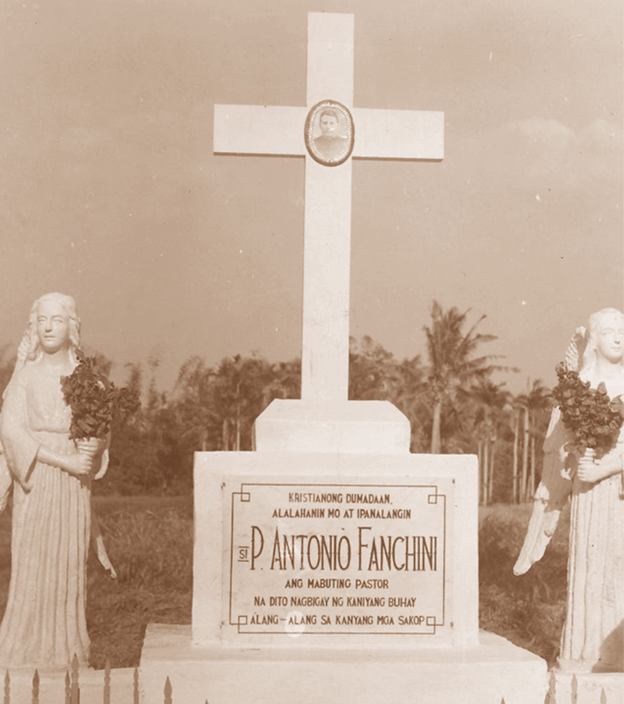
Marker at the site of Fr. Fanchini's Martyrdom
During the 1930's, three more Italian OSJs came: Fr. Giuseppe Visintainer (1932), Fr. Lorenzo Bo (1937) and Fr. Guido Coletti (1939). Within this period also, the mission saw its first fruits with the ordination of Fr. Lauro Guce (1937) and Fr. Lucio Aguilar (1940). Both were ordained in Asti, Italy.
With the country beseiged by the Second World War, the Italian priests courageously carried out their mission even to the point of sacrificing themselves for the sake of their faithful. This dark epoch of the nation witnessed the martyrdoms of Fr. Prandi in Cuenca and of Fr. Fanchini in Padre Garcia.
Post-war Challenges
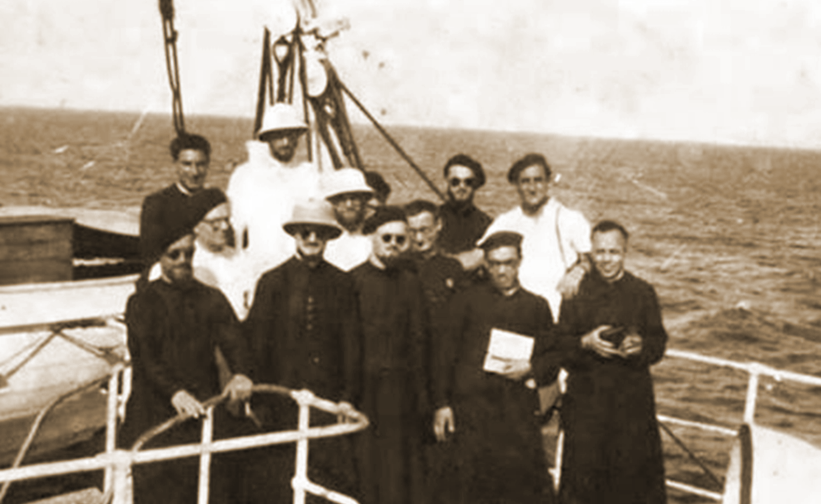
Fr. Pasquale, Fr. Urro, Fr. Vito, Fr. Edoardo
and Fr. Visintainer
bound for Manila in 1947
After the war, many towns and parish churches suffered severely. The arrival of Fr. Urro Gotri, Fr. Edoardo Meda, Fr. Vito Sorrenti and Fr. Pasquale Pontelandolfo in 1947 and of Fr. Federico Lano, Fr. Elia May, Fr. Enrico Tunesi and Fr. Alan Pearson in 1948 greatly helped the mission.

The newly-constructed seminary building
in San Jose Batangas
The need for more workers in the vineyard of the Lord, prompted the Italian missionaries to open a local seminary. Thus, in 1951, the St. Joseph Mission Institute began to operate. It is sitatuated in a lot acquired from the Diocese of Lipa through the efforts of Fr. Guido, who was then the superior of the mission, and Fr. Pearson.
The mission is now a delegation
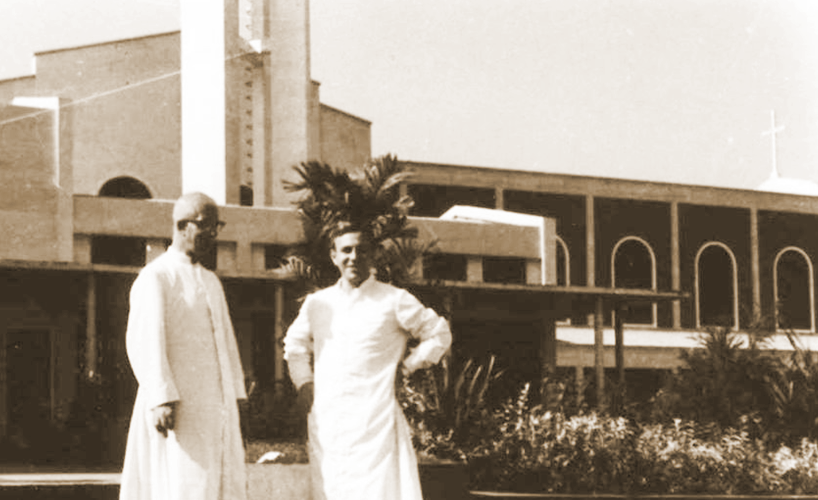
Fr. Guido and Santuario de San Jose,
Mandaluyong, circa 1967
In 1952, the missionary group was recognized as a delegation of the Congregation during the Sixth General Chapter. It took another five years, before the first Filipino Delegate was appointed in the person of Fr. Lucio Aguilar. It was during his term that greater focus was given to the strengthening and foundation of educational institutions administered by the Congregation
When Fr. Guido Coletti was appointed as Delegate Superior, he initiated the opening of the first religious house outside of Batangas. This endeavor began in 1961 with the donation of a lot in a newly established subdivision in Mandaluyong. Though the condition was to build the chuch within three years, it took at least six years to complete the project. On March 19, 1967, the Santuario de San Jose was formally inaugurated as the first OSJ parish in the metropolis area.
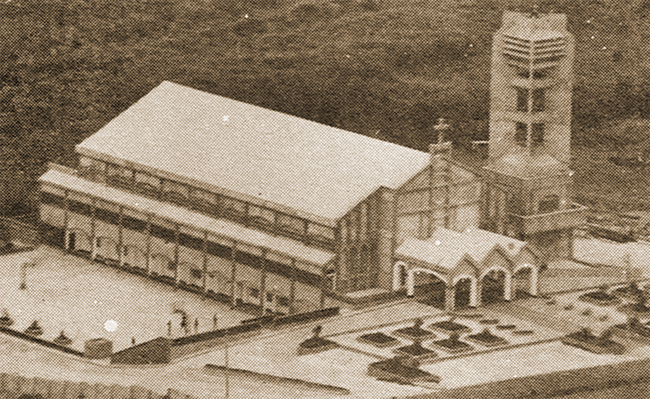
The newly-constructed L'Anunziata Church, circa 1984
Due to lack of personnel, the Augustian Recollect Fathers were forced to give up the pastoral and canonical administration of San Juan Parish, San Juan, Batangas. In a board resolution of the Archdiocese of Lipa in 1978, the parish was entrusted to the Oblates of St. Joseph. But the local delegation needed to turn over the parish of Cuenca to the archdiocese. The Congregation began their apostolic work in San Juan on May 1, 1978. The same year also saw the opening of another community outside Batangas. Through a lot donated by a resident from Greenhills,the OSJ delegation built a church (the Parish of St. Anthony de Padua) and a seminary in Inarawan, Antipolo, Rizal.
In 1984, the Delegation opened the second community in the metropolis outside Batangas which includes a church, the L'Annunziata Parish and the new OSJ novitiate house.
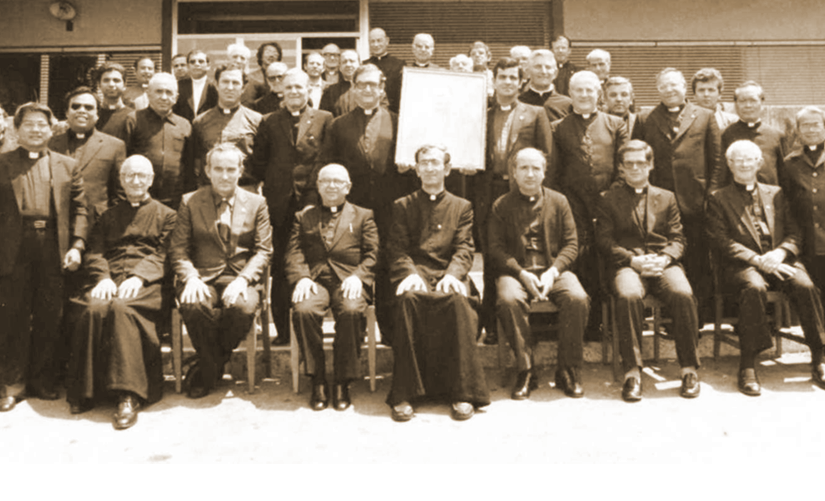
The Twelfth General Chapter, circa 1987
The OSJ Philippine Province since 1987 and beyond
In 1987, the OSJ Philippine Delegation finally became a Province through an approved resolution of the 12th General Chapter of the Congregation held in Rome, Italy.
They may be called gifts to the new province as the Chapter acknowledged and approved the opening of two communities: the Blessed Sacrament Parish, Biñan, Laguna (including the new seminary for the junior professed brothers) and Christ the King Parish, San Pedro, Laguna.
In 1991, the next community in San Pedro, Laguna was opened. This was the Our Lady of Fatima Parish in Elvinda Village.
Three years after was the inauguration of the Marello Retreat House in Tagaytay City, Cavite (1994). This was through the efforts of Fr. Guido Coletti.
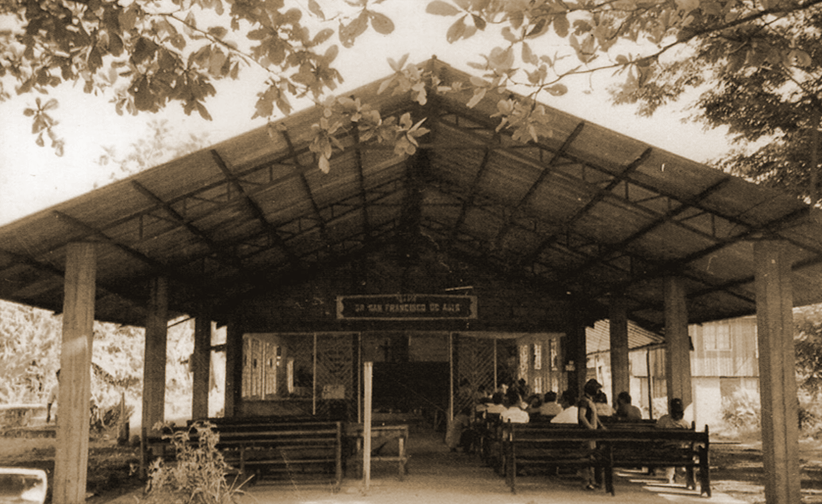
The old church of San Francisco de Asis in Davao
When the Philippines hosted the World Youth Day in 1995, the Province was the venue of the first OSJ International Youth Congress.
In 1996, the province mourned the death of its zealous church builder, Fr. Guido Coletti who served in the country for almost 60 years.
With the approach of the new millenium, the Province took another bold initiative by opening its first community outside the Luzon island, the Spousal of Joseph and Mary Parish in Buntatala, Jaro, Iloilo City in 1999. This was followed by the inauguration of a new parish, San Francisco de Asis Parish, in Davao City on the same year.
Three missionary frontiers were opened in 2004 and 2005 with the Province accepting the invitation of the Diocese of Balanga, Bataan to minister the Parishes of Pilar (San Isidro Labrador Parish, 2004), of Alasasin, Mariveles (Sto. Niño Parish, 2004), and of New San Jose, Dinalupihan (San Jose Parish, 2005).
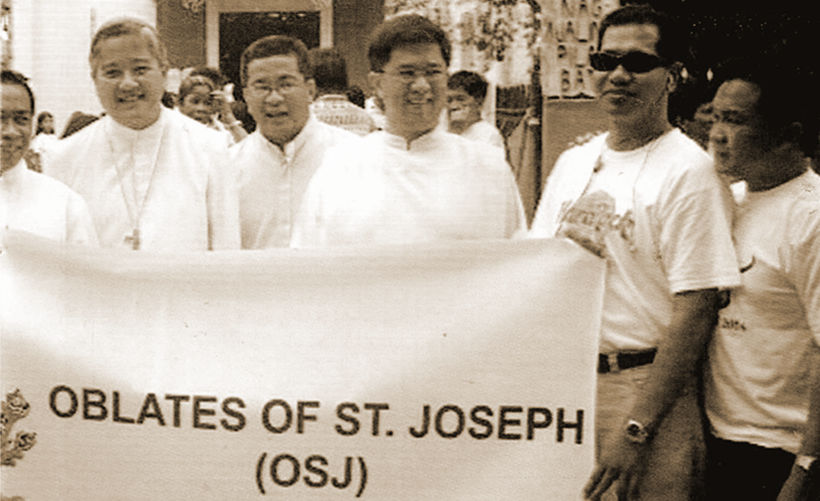
Bishop Soc welcomes the OSJ to Bataan
In 2007, the Filipino Oblates bid farewell to the last Italian missionary in the country, Fr. Elias May. He died on March 30, 2007, dedicating 59 years of his life as a missionary to the Philippines.
From 2008 to 2013, the Province initiated the opening of more missions: St. Joseph Marello Mission Territory, Puerto Princesa, Palawan (2008), St. Damien of Molokai Parish, Dawesville, Australia (2009) and San Luis Parish, Cauayan, Isabela (2013). In 2017, a new parish in Antipolo was consecrated This was erected in honor of St. Joseph Marello. In February of 2018, the Province began its pastoral assistance to the Archdiocese of Lingayen-Dagupan with the administration of San Lorenzo Ruiz Parish in Bayambang, Pangasinan. In 2021, even amidst the COVID-19 pandemic we were able to begin another mission in Palawan with the administration of San Ezekiel Moreno Parish in Brgy. Macarascas, the mother parish of the Santuario de San Jose Marello.
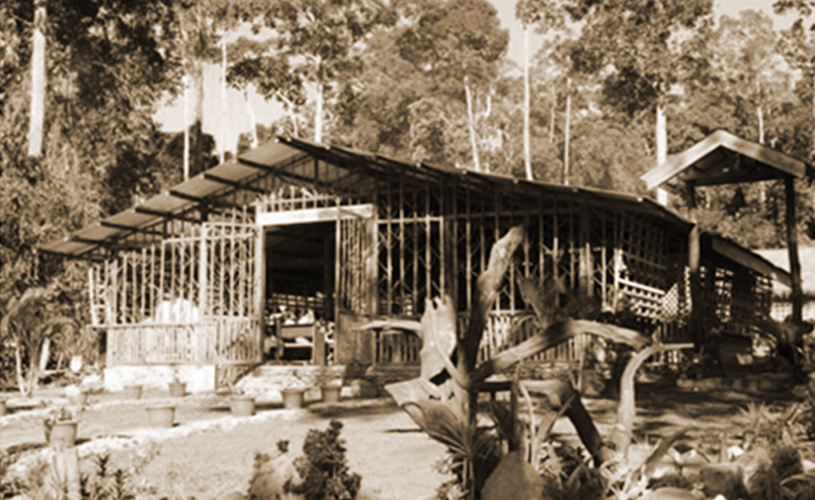
The old parish church of Santuario de San Jose Marello in Palawan
One-hundred years after the arrival of the first missionaries in the Philippines, there are now 131 (nine are juridically transferred to other Provinces)
perpetually professed members (priests and brothers) and 13 junior professed. They are present in total of 11 dioceses in the country, two dioceses in Australia, in the OSJ Province in North Italy and in the Generalate, one in the United States of America and one in Indonesia.
The Oblates of Saint Joseph in the Philippines are positively looking forward into the future, having an increase not only in their number but in providing for the Church holy and dedicated religious priests and brothers, serving the interests of Jesus like St. Joseph as taught by their founder, St. Joseph Marello.
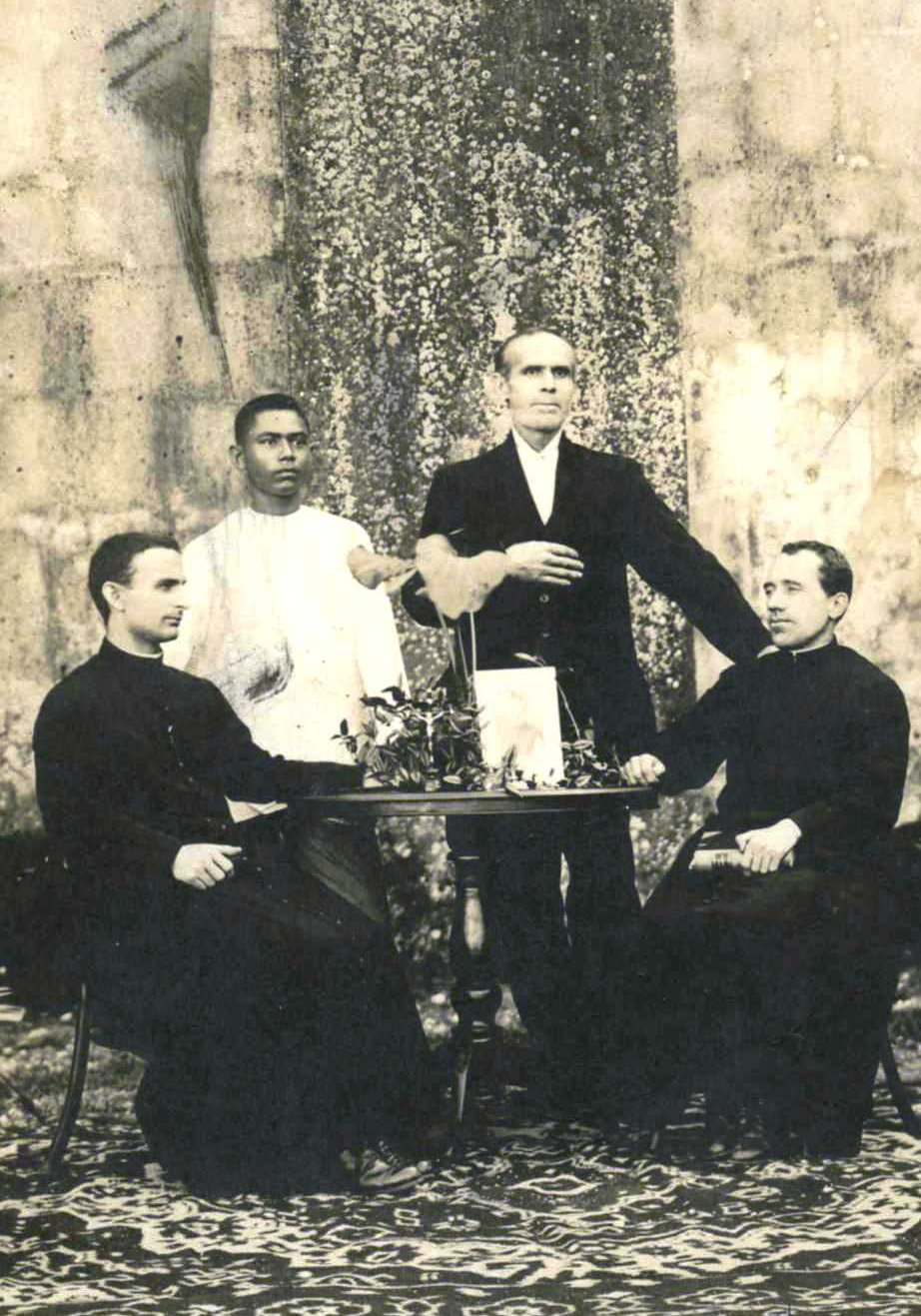
We remember our foreign priests and religious brothers who have served in the Province
Read more
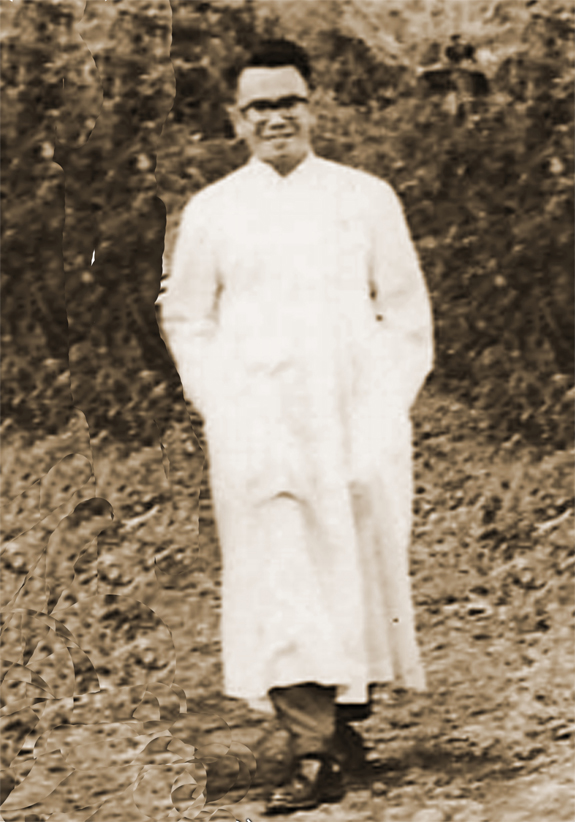
We remember our beloved Filipino confreres who have gone ahead of us.
Read more
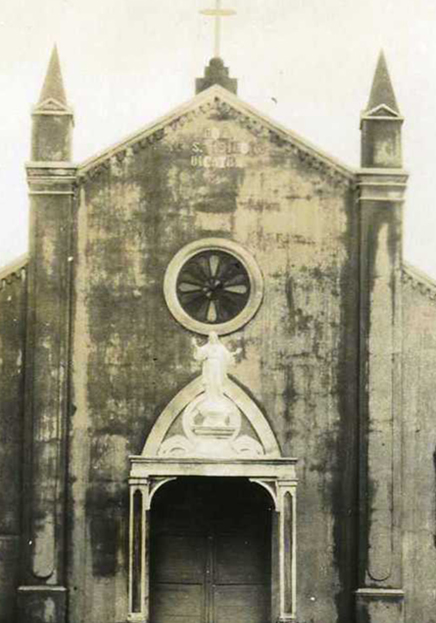
Read all about the parishes and communities that were once under the ministry and care of the Province.
Read more
IN GRATEFUL REMEMBRANCE
Born in Acqui, Italy on 03 September 1882
26 years of Religious life
and 19 years of Priesthood
Died in Manila, 16 July 1921
Buried in the OSJ Ossuary, San Jose, Batangas
Read more
Born in Monale d‘Asti on 23 April 1862
12 years of Religious life
Died on 9 July 1919
Buried in the OSJ Ossuary, San Jose, Batangas
Read more
Born in Sessant d‘Asti on 24 January 1888
51 years of Religious life and 46 years of Priesthood
Died on 26 September 1959 at the Mother House in Asti
Buried in the tomb of the Congregation in Asti
Read more
Born in Cossombrato, Asti, Italy on 28 January 1890
67 years of Religious life and 59 years of priesthood
Died on 13 June 1973 at the Marello Rest Home in Asti
Buried in Cossombrato
Read more
Re-admitted to the Congregation on 3 September 1914
One of the first five missionaries to the Philippines in 1915
Left the Congregation in 1922
Born in Alba, Italy on 30 December 1892
36 years of Religious life and 30 of Priesthood
Killed on 27 January 1945 in San Jose, Batangas
Buried in the OSJ Ossuary, San Jose, Batangas
Read more
Born in Montemagno, Italy on 26 January 1893
49 years of Religious Life and 37 years of Priesthood
Died on 22 June 1959 in the Mother House
Buried in the cemetery of Asti
Read more
Born in Caniglie d‘Asti on 31 March 1898
48 years of Religious life and 40 years of Priesthood
Died on 11 October 1963 in the Mother House in Asti
Buried in the tomb of the Congregation in Asti
Read more
Born in Caniglie d‘Asti on 21st April 1889
70 years of Religious life and 55 years of Priesthood
Died on 10 September 1976 in the Hospital in Lipa
Buried in in the OSJ Ossuary, San Jose, Batangas
Read more
Born in Castelletto, Novara on 12 March 1901
26 years of Religious life and 19 years of priesthood
Killed on 14 February 1945 in Padre Garcia, Batangas
Buried in the church of Padre Garcia
Read more
Ordained in July 1926.
Left the Congregation and the priesthood in 1937.
Born in Marter, Trento, Italy on 21 June 1899
30 years as Religious and 25 years as priest
Died on 16 February 1956 in Cuenca, Batangas
Buried in in the OSJ Ossuary, San Jose, Batangas
Read more
Born in Rocchetta Tanaro, Asti on 2 September 1912.
Died on 17 September 2009 at Clínica P. Luis Tezza, Lima, Peru
97 years old, 80 years of religious life and 73 years as priest
Read more
Born in Torra, Trent, Italy on 30 April 1912
65 years of Religious Life and 59 years of Priesthood
Died on 21 November 1996 in Manila
Buried in in the OSJ Ossuary, San Jose, Batangas
Read more
Born in Borghetto di Noceto, Parma, Italy on 28 January 1917
56 years of Religious life and 48 years of Priesthood
Died on October 23, 1991
Buried in the OSJ Ossuary, San Jose, Batangas
Read more
Born in Corbetta, Milan on 16 July
33 years of Religious life and 25 years of Priesthood
Died on 8 May 1968 and buried at Corbetta
Read more
Born in Polia, Catanzaro, Italy on 1 December 1921
45 years of Religious life and 38 years of Priesthood
Died in Nuoro on January 9, 1983 and buried in the cemetery of Nuoro
Read more
Born on 3 January 1921 in Riccia Campobasso, Italy
73 years as religious, 65 years in the priesthood.
Died on 23 September 2011 in Chimbote, Peru
Buried at the Cappella del Clero di Riccia
Read more
Born in San Damiano d‘Asti on 3 December 1920
69 years as religious, 61 years in the priesthood
Died on 13 November 2009 in Castelnovo Calcea
Read more
Born in Schilpario, Bergamo on 8 February 1920
87 years of age, 60 years as priest and 67 years as religious
Died on 30 March 2007 in Lipa
Buried in the OSJ Ossuary, San Jose, Batangas
Read more
Born in Arluno, Milan, Italy on 13 November 1922
56 years of Religious life and 48 of Priesthood
Died in Sacramento, California, USA on 23 January 1997
Buried in St. Mary‘s Cemetery in Sacramento, California
Read more
Born in Adams, Nebraska, USA on 25 July 1920
59 years of Religious life and 52 years of priesthood
Died on 2 June 1998 in Madera, California, USA
Buried in Calvary cemetery in Madera
Read more
He was ordained in 1967. Then he was sent as a missionary to the Philippines on October 1968. But for personal reasons, he left the congregation in 1971.
Rev. Fr. Giuseppe Anfossi, OSJ
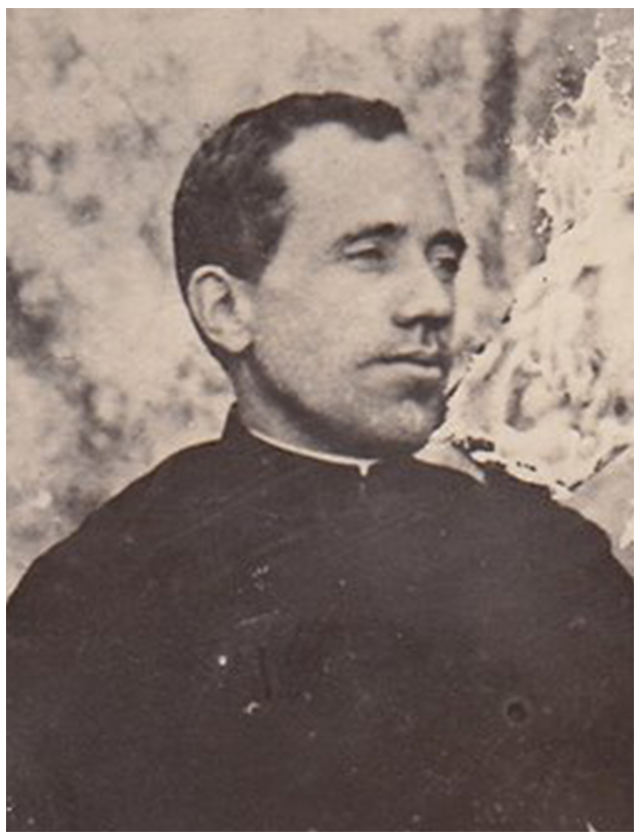
Father Giuseppe Anfossi had been a priest since 1909 and had experience ministering among seminarians in Asti and then in the oratories of Ceraldo and Oleggio. He had been assigned Superior shortly before leaving for the mission to the Philippines. As a result, Fr. Anfossi was witness to the first pains that had been inflicted upon them and that he had to carry the burden of overseeing the well-being of his brothers while going through a period of adjustment himself.
Upon arriving in Batangas, Fr. Anfossi was assigned to the main parish in San Jose with Brother Giuseppe Maccagno. The parishes of San Jose and Cuenca were composed of 21,000 souls. It was truly an overwhelming assignment given to only two bodies. Though only about two hours from San
Jose, the roads to Cuenca were infamous for thieves who attacked the
travelers from Lipa, who were known to strike the unwitting
victims with a sword or a cudgel, sending them to a violent
death before going on to loot their money, belongings and
other valuables.
Such were the hazards that Fr. Anfossi dealt with, not to
mention the fact that he was constantly on long trips on
horseback to fulfill his duties between these parishes.
The tropical weather was also slowly weakening him.
Nevertheless, Fr. Anfossi fulfilled his obligation as Superior
well, with most of his letters speaking only of his concern for
his brothers. His eloquent and emotional letters would often
be describing the situation of the parishes of Ibaan, Tombol,
Taysan, and Lobo, which had such needs for reconstruction
if they were going to properly fulfill the duties they were
meant to do. And so, as Fr. Anfossi would continuously
request for assistance from Asti, by his own actions he also
tried to raise funds hoping to raise 450-500 Pesos to be spent
for the dilapidated or nonexistent churches. By all accounts
he was known to be gentle-hearted and accommodating,
too much in fact that he would neglect his own health and
well-being in favor for others.
The long trips on horseback were slowly taking its toll on
him, and his weakening state worsened by the sorrows he
would experience in being apart from his beloved brothers
when the time came that spiritual support was necessary.
Added to that was the death of his closest companion,
Bro. Giuseppe Maccagno a few years prior to his, and the
silence from Asti in response to their repeated request for
assistance.
On the 16th of July 1921, Fr. Anfossi’s continuously
deteriorating health sent him to the hospital. During this
time, Bro. Camera had been on his way back, bringing with
him the reinforcements to the Philippine Mission. The
good news, while delighting Fr. Anfossi, did little to help his
condition. At 9:45 am of the 20th of August, at the tender
age of 38 years old, he had gone back to the Lord whom he
had served so well.
Close
Br. Giuseppe Maccagno, OSJ
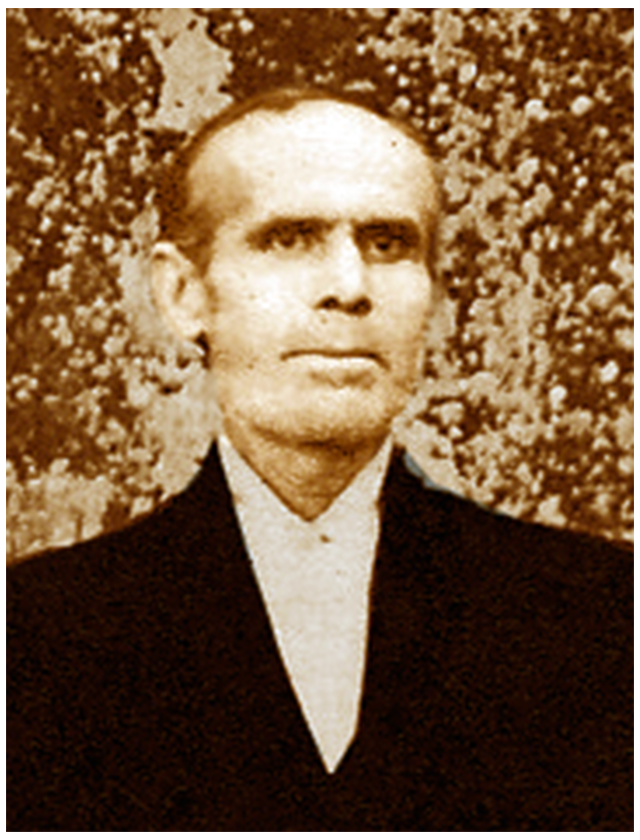
He was born on April 23, 1862 in Monale d‘Asti, Italy. In 1907, he made the Perpetual Profession and remained in the Novitiate house going to work at the Casabianca during the day. In 1908, he was sent to the agricultural colony of Figliano (Florence) and in 1911 to Certaldo (Florence). When this house was closed in 1913, along with Father Giussepe Anfossi and other confreres, he went to open the new house in Oleggio (Novara). When he was at Certaldo he had told Father Anfossi: “The two of us will cross the sea and we will go far away.” And, in fact, they were part of the first group of five missionaries who went to the Philippines in 1915.
Aside from his age, Bro. Maccagno also had a gift for
prophecy. Having been with Fr. Anfossi since their stay
at Certaldo, he already had a vision shared to Fr. Anfossi,
being, “That the two of us will cross the sea and we will
go far away.” Indeed, that was exactly what had happened.
Amidst the chaos even in the very boat with their new
friends and guide, Bro. Maccagno had proven himself to be
the neutralizer and the quiet “glue” that held many things
in place.
Upon arriving in Batangas, Bro. Maccagno was assigned
along with Fr. Anfossi to San Jose, which includes also the
parish of Cuenca. Together they handled 21,000 souls.
While the favorable location of San Jose put it within the
area of first class roads and near Lipa, the roads to Cuenca
were known for thieves and vagrants that would victimize
passersby.
During this time, as Fr. Anfossi was constantly on
horseback travelling from one area to another, the elderly
Bro. Maccagno was in charge of sacristy, as well as being
given the responsibility for the kitchen and the treasurer of
the house. Bro. Maccagno was unwavering in fulfilling his
duties and was beyond reproach meriting praises from Fr.
Anfossi who would often write about his appreciation and
admiration for Bro. Joseph for being ready at any time of the
day and ready to help in every aspect even upon just hearing
the approaching sound of the horse. He was, according to all
accounts, doing an apostolate of good example.
Perhaps it was his quiet and timid nature that made him
more inclined to cultivate the garden in order to plant and
harvest some good vegetable that could add to their often
sparse diet as a result of their strict financial situation. The
good brother nurtured his little plot of land, trying to plant
tomatoes, and other fresh herbs. However the constant
onslaught of typhoons would often render his efforts futile.
Such drawbacks never bothered the enduring brother who
simply tried, and tried again.
Throughout all this, Bro. Maccagno was also a sterling
example of spiritual practice, never failing to get up in the
morning and by candlelight to read meditations, to do
devotions with contemplative conversations with Jesus. By
this time, in 1916, he was already 54 years old.
In October of 1918, Bro. Maccagno was aff licted with
dysentery, and true to his unassuming nature, he had tried
to keep his pain and difficulty hidden for two months.
Never wanted to let others make a fuss, he had initially and
vehemently opposed attempts to be sent to the doctor, so
much so that by the time that he had agreed to put himself
under medical examination, they found his illness difficult
to heal.
He was constantly in the state of weakness since then but he
was still steadfast in his desire to serve the mission. During
this time, the missionaries had convened to decide on
whether to send Brother Joseph to Italy, hoping that perhaps
being back in his native country would restore the color to
his cheeks seeing as how, in the words of Anfossi, the work
and weather of the Philippines had taken 20 years from
his life.
Rev. Fr. Ernesto Fornaca, OSJ
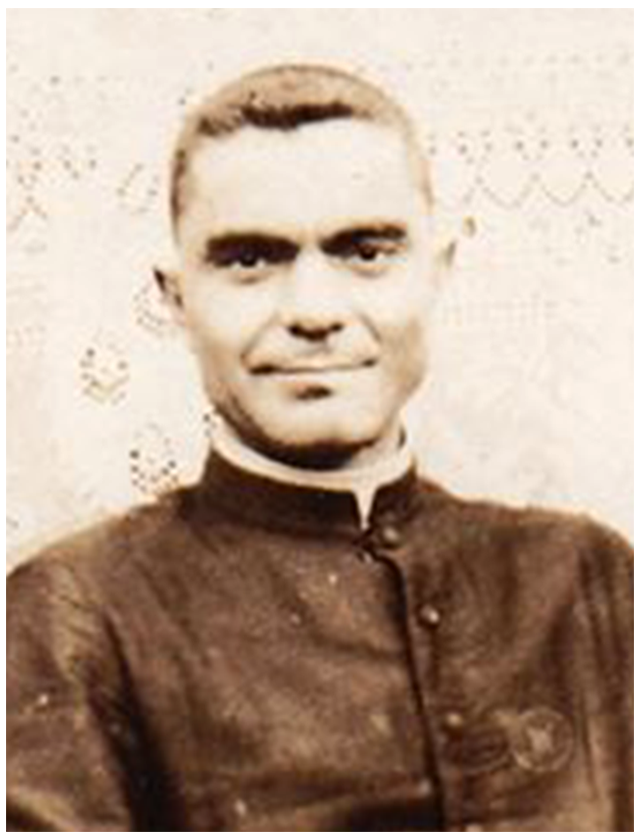
He was born on January 24, 1888 in Sessant d‘Asti, Italy. He entered the Congregation at the age of 12 and completed regularly his studies, being ordained priest in Asti in 1913. For a short period, he was teacher and prefect of the minor seminarians in Asti and in Mondovi.
At 27 years old, the second
youngest in the group, he was only two years a priest when
he left the oratory and church of Mondovi to depart for the
Philippines.
The hardships of Fr. Ernesto were magnified as he was
assigned to Taysan and Lobo, the farthest from San Jose,
and composed of 14,000 souls. This posed an immense
challenge as from San Jose to Taysan, it was a four-hour
travel by horse; and from Taysan to Lobo, another fivehour journey through mountainous roads and streams.
Originally planned to be accompanied by Bro. Camera, Fr.
Ernesto was left alone when the former was transferred to
fulfill his duties as assistant to the Apostolic Delegate. By
such turn of events even the comfort of having a familiar
ally in such a strange and unfamiliar new world was also
taken from Fr. Ernesto.
Fr. Ernesto’s first harsh introduction to the life he had chosen
was the poor and shabby condition of the church where he
was assigned. Though Fr. Ernesto was already accustomed
to live without possessing many things, in Taysan he had
spent from the moment of his arrival and until the next few
months, sleeping on the dirty f loor on a simple mat with no
bed. In the beginning he also had no chairs, had eaten on
borrowed plates and bathed using only a glass. After a few
months his situation improved as he received a donation of
three new chairs and had gotten a hold of his own plates and
a sink.
The fatigue from the travel was particularly gruelling.
He would often travel all night on horseback through harsh
roads, devoid of any light except from the stars in the sky.
On Sunday morning he would celebrate mass and preside
a meeting in Taysan and by Monday morning, travel for
more hours on horseback to go to the parish in Lobo where
he would remain a few days before returning to Taysan.
Though he had two parishes under his charge, Fr. Ernesto
had only one church since the other was destroyed by a
typhoon in November 1916.
Despite of these, Fr. Ernesto continued with his duties
dividing his time between the two parishes assigned to him.
He became known
to the people of the community.
Of the first
five missionaries he served the Philippines the longest for forty-two years.
Rev. Fr. Eugenio Gherlone, OSJ
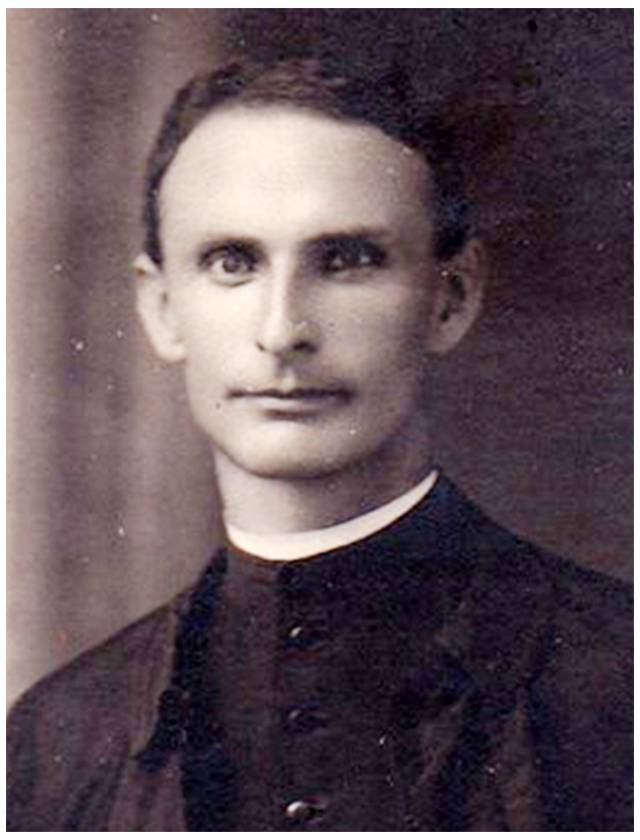
How many times on feast days arriving from Tombol at
12:00 or at 13:00, after hours of travelling, I find in the
kitchen two or three hard-boiled eggs, and a dish of
uncooked rice?
Such were the words of Fr. Eugenio Gherlone, one of the
first five missionaries who had arrived to undertake the
long and exhaustive journey to fulfill their vision for the
Philippine Province.
He was born on January 28, 1890 in Cossombrato, Asti, Italy. He was ordained a priest in 1914, and the year after he left for the Philippines along with the first group of Oblate missionaries.
Narrating the usual and sad scene that would often greet
him after tiring days of work, Fr. Eugenio Gherlone would
often be overcome by a strong headache. And because of
exhaustion due to lack of proper food and his involuntary
prolonged fasting, he got himself weaker and even found
eating difficult.
However, as his brothers were, Fr. Eugenio Gherlone was a
soldier and instrument of the Lord, and bearing this in mind
he continued on with the missions. His last decades in the
Philippines bore witness to cementing the place now called
"home" of the Oblates of St. Joseph especially in Batangas.
The youthful
fire was evident in Fr. Eugenio’s life and ministry. He was
admired for being methodic and precise though not quite
made for diplomacy as his later dealings would often show.
His eager and forthcoming spirit sometimes got the better of
him, such as his refusal of Msgr. Petrellii’s proposal for him
to leave the two parishes and stay in the Apostolic Delegate
as secretary. Despite Msgr. Petrelli’s insistence, Fr. Gherlone
did not keep silent about his dissent, citing his inability to
carry out such office. But Fr. Eugenio would prove himself
to be a good person instrumental in laying the groundwork
for a more organized mission in the country.
Upon arriving, Fr. Eugenio was in-charge of the vast
parishes of Ibaan and of Tombol (now Rosario) which had
a population of 18,000. About an hour and a half from San
Jose, both towns were on the way to Taysan, through a road
that was not crossed by streams, though good on daylight
but difficult in rainy season. The means of transportation
was by horseback.
In Tombol alone, Fr. Eugenio had more than 12,000 souls
under his charge and it was only him who had to do the work
of saving the people from the inf luences of the Aglipayans.
In fact, the presence of the Aglipayans added to the difficulty
of bringing back the people to the Christian Faith. There
was a strong anti-colonialism mindset at the time as the
atrocities during the Spanish era were still fresh in the minds
of the people. Moreover, there was great distrust against the
foreigners. And all these came to the cares of Fr. Eugenio,
who was also trying to acquaint himself with the language
and the people. With great suspicions against westerners
even the Catholics were ashamed to attend mass or greet
the priest. He however persisted, celebrating services for
free; and though slowly Fr. Eugenio paved the way for a seed
of admiration to be planted in the hearts of the people.
The people of Ibaan, on the other hand, was considered by
Fr. Eugenio as "fervent and beautiful group of people." And
because of the people’s strong religious fervor he found
his work-situation lighter. Nevertheless, as people began
appreciating his works, he said that he was "in perfect peace,
harmony and concord with both places."
Fr. Eugenio stayed in Tombol from Monday to Wednesday
while doing also services in the Church of Ibaan. Despite
of these hardships alongside with familiarizing himself with
the people and the country, the lack support for decades
from his brothers in Italy, he continued with his work
holding true to his calling.
Upon Fr. Anfossi’s death, it was Fr. Eugenio who had
assumed the role of Superior which he served for two three-year terms. During this time he took great part in the many
milestones the Oblates had achieved and initiated the first
formal negotiations with the Bishops of Lipa regarding
financial support for the missionaries.
After passing his torch as superior to Fr. Fornaca, he left the
Philippines to return to Italy to do the honor of opening the
missions to the USA, Peru and Bolivia, spreading his fiery
and raw passion for service to even more continents all over
the world.Because of this arduous spirit in opening these missions he was known as "the Apostle of three continents".
He died in Asti, Italy on June 13, 1973.
Rev. Fr. Vincenzo Prandi, OSJ
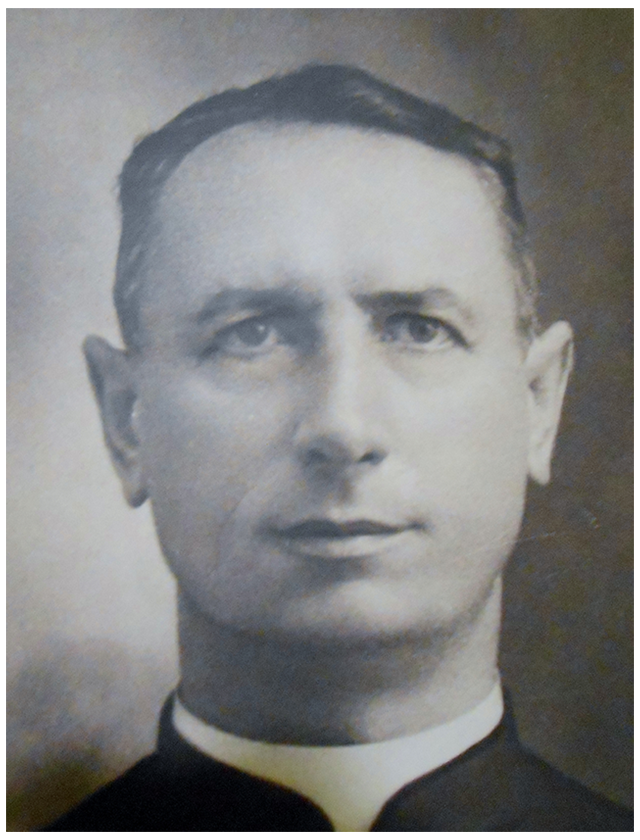 A few months after his priestly ordination, he was called to serve as a chaplain in the Italian Light Infantry Corps and was sent, during the whole period of 1915-1918, to the front, in the midst of a raging war. When he returned to the Mother House, he was prefect of the theologians. In 1921, he left as a missionary for the Philippines.
A few months after his priestly ordination, he was called to serve as a chaplain in the Italian Light Infantry Corps and was sent, during the whole period of 1915-1918, to the front, in the midst of a raging war. When he returned to the Mother House, he was prefect of the theologians. In 1921, he left as a missionary for the Philippines.
He was the pastor of Taysan and then Cuenca, where he built a church in brickwork replacing a shed-like structure made of wood and bamboo which he also had founded.
In 1932, he became the Superior of the mission and was transferred to San Jose as parish priest. In 1938 he took part in the Fourth General Chapter in Asti.
Few years after he returned to the Philippines, he, together with the other Italian OSJ missionaries, found himself in the war between the Americans and the Japanese. During the Japanese occupation, he experienced several painful hours and threatened repeatedly of having aided and defended his parishioners accused as rebels. He tried to intervene when some of his parishioners were held captive but to no avail. They even bound him and threw him in a hut with the other prisoners. The next day they were carried in a truck to an unknown destination. They had been brought to the bank of a stream where they were gunned down. The others had died instantly, but Fr. Prandi, seriously wounded and fallen into the bed of the dry steam, rose to sit down, making the sign of the cross towards their assassins. So a soldier pierced him through several times with his bayonet. But since he still showed signs of life, that same soldier finished him off by breaking his head with the butt of his rifle. This was on January 27, 1945. His remains were found the almost five months after, on June 6, identified because of some golden teeth and was properly buried in the cemetery of San Jose. He lived 36 years of his life as a religious and 30 years as a priest.
Rev. Fr. Giovanni Boccignone, OSJ
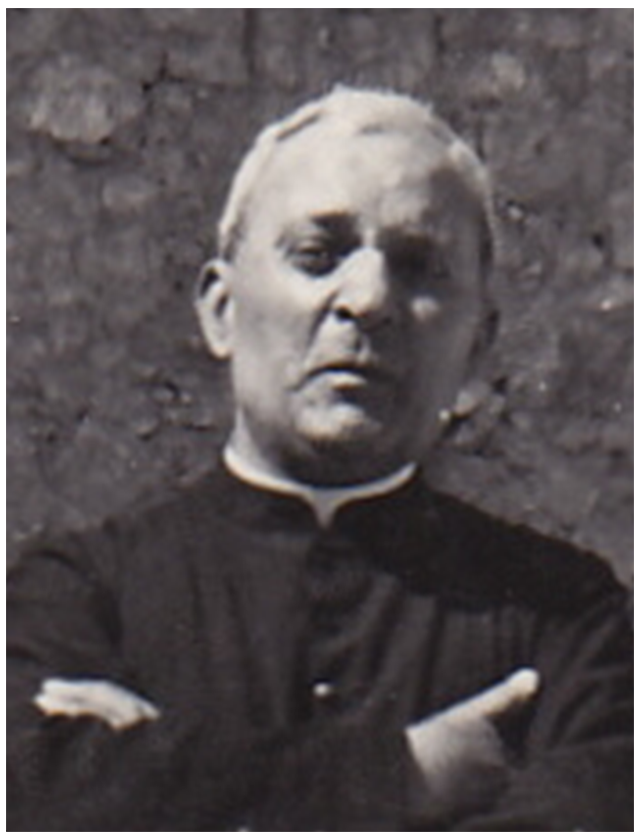
He was born on January 26, 1893 in Montemagno, Alessandria, Italy.
A year after his Perpetual Profession, still a cleric, in 1921 he left for the Philippines. Like other Italian missionaries, he also studied and learned the native language and the local habits and customs. In 1922, he was ordained priest in Lipa, Batangas.
He was first assigned as parish priest of Cuenca. A year after he was assigned in Taysan where he stayed for around thirteen years.
In 1936, he was forced to return to Italy due to his failing health. Late in his life, he became blind and had to abandon all his ministry and activities. He died on June 22, 1959 at the Mother House, Asti.
Rev. Fr. Luigi Mortera, OSJ
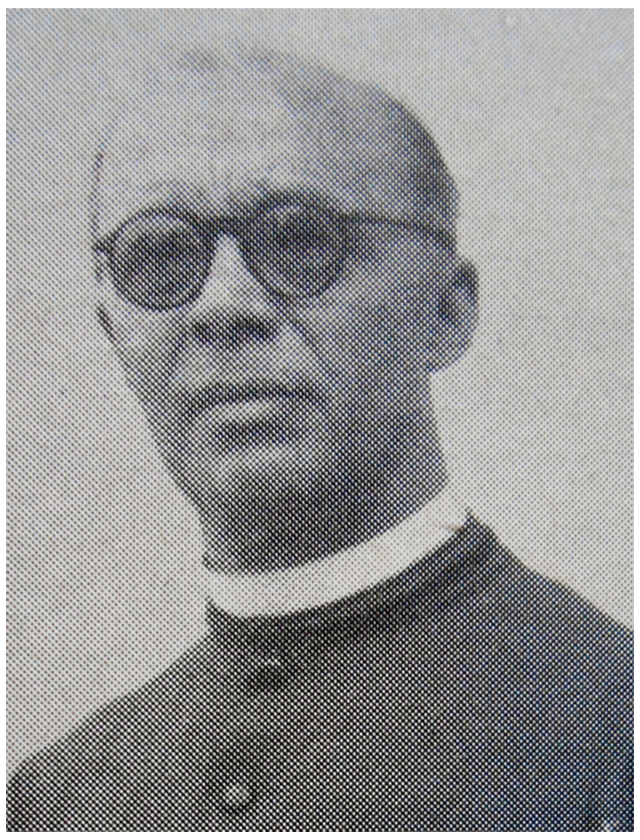
He was born in Camiglie d‘Asti, Italy on March 31, 1898.
At the age of nine, he entered the Congregation. He was not even a priest when he joined the second group of missionaries for the Philippines. They left Italy in 1921. He was ordained in Ibaan, Batangas in 1923.
From 1923 to 1938, he worked in the parish of San Jose, Batangas, first as assistant and then as parish priest.
In 1938, he took part in the Fourth General Chapter in Asti. When he returned to the Philippines, he went to Rosario where his brother, Fr. Egidio was staying and later he became its pastor.
During the Second World War, he suffered so much with the atrocities he witnessed from the Japanese invaders. He also saw how they destroyed the convent and the parish church.
He rebuilt his residence as soon as possible and in 1946, he inaugurated also the church, an improvised building just so he could start the life of the parish.
In 1963, with his health very much compromised, he came to Italy to be able to rest for a while. But his plan to return to the country never happened when he suffered a fatal heart attack on October 11, 1963. At his funeral in Asti, Msgr. Olalia, Bishop of Lipa, was present. He lived 46 years as a religious and 40 years as a priest.
Rev. Fr. Egidio Mortera, OSJ
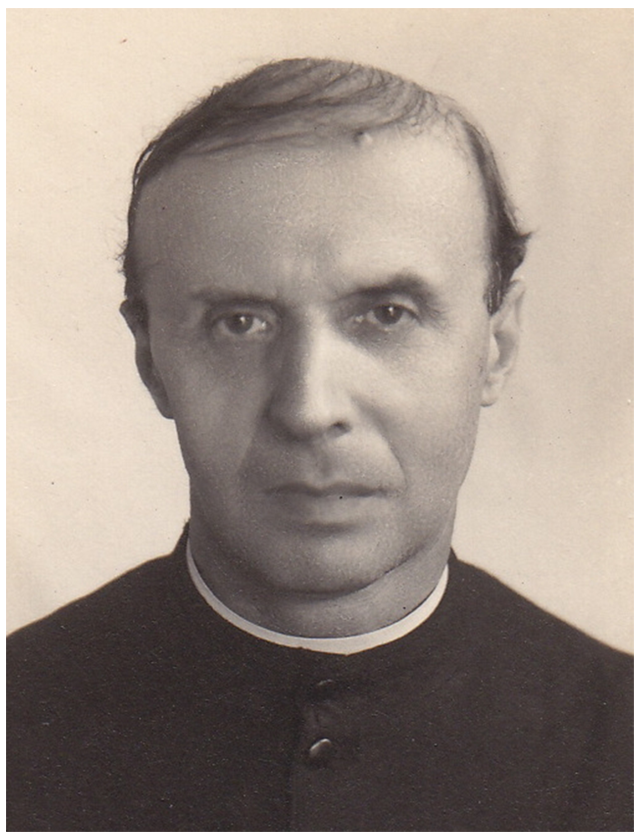
He entered the Congregation at age 17 and was ordained Priest in 1921.
For five years, he worked in Fulgor in Asti. In 1927, he left for the Philippines and worked in the Parish of Rosario in Batangas, together with his brother Fr. Luigi. The vast Parish of Rosario had been divided between many sects and even the parish church had fallen in the hands of the Aglipayans (a nationalistic church named after its founder, Gregorio Aglipay who was a former Catholic priest). For the few remaining Catholics, there was only a wooden chapel, which will later be replaced by the actual church, initiated by Fr. Edoardo Meda, OSJ.
He went for vacation in Italy in 1939. However, due to the outbreak of war, he remained in Asti until 1946 working in the Michelerio Institute and in the Mother House.
Then he returned to Rosario and was reunited with his brother, who suffered much during the war. After a short time, he started the new Parish of Alupay, by separating it from Rosario. He stayed for 24 years.
After which he returned to Rosario and helped Fr. Edoardo and Fr. Elia May.
He truly served tirelessly until his death. He suffered a heart attack and was hospitalized in St. Sebastian Hospital in Lipa. There he passed away at the age of 87, 70 years of them as a religious and 55 years as a priest.
Rev. Fr. Antonio Fanchini, OSJ
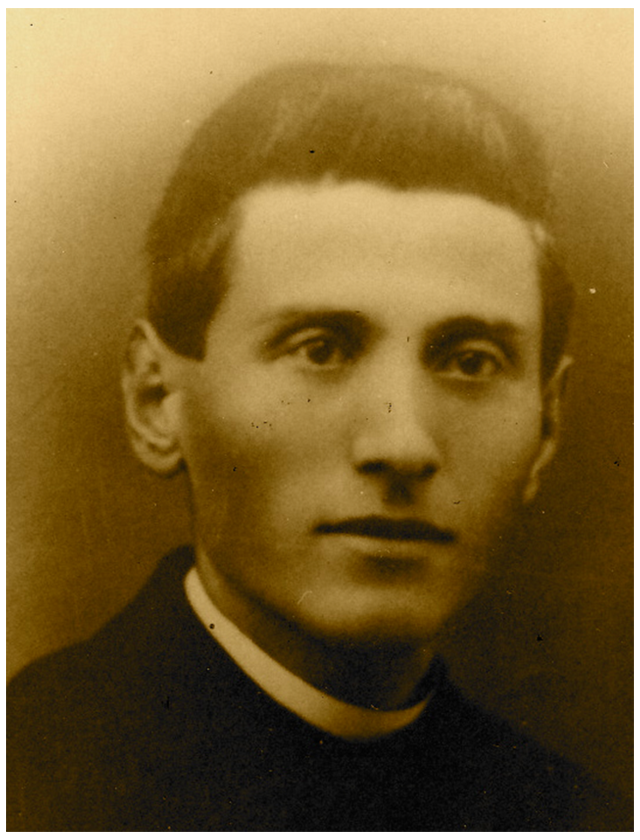
A few months after his ordination, he left as a missionary for the Philippines in 1929. He helped the confreres in San Jose and Cuenca. In 1929, he became the parish priest of Lumang-Bayan (now, Padre Garcia), Batangas. He learned the native language quite well.
During the outbreak of the war between the Americans and the Japanese, he was imprisoned as an enemy, like the other Italian priests. He was, however, freed when the Japanese arrived. But when the Japanese had to retreat, they massacred many civilians and burned many villages. The population evacuated to the nearby mountains, but he remained in his place, leaving the message: “Whoever may need the priest, knows where to find him.” On the evening of February 13, 1945, the Japanese arrived in the town and started to kill many people and set the place on fire. Together with some people, Fr. Fanchini left the convent and took refuge beyond the river.
Around midnight, he returned with an old man who was his sacristan. Everything was silent in the village that was still smoldering. On the insistence of the old man, Fr. Fanchini retired to take a rest. Around five in the morning the Japanese returned. He leaped to his feet and told the old man: “Go ahead and I will follow you.” The old man ran towards the river and was saved. For unknown reason to many, he did not follow the old man. Late in the afternoon, when the people returned they found him dead. He was lying under the shade of a coconut tree at the edge of the rice field close to the church, his face towards heaven and his arms opened wide. His chest was ripped open by bayonet strokes, his skull was broken with the butt of rifles.
He lived 26 years of his life as a religious and 19 years as a priest.
Rev. Fr. Giuseppe Visintainer, OSJ

He was born on June 21, 1899 in Marter, Trent, Italy.
He entered the quite late at the age 25. But it took him only six years to finish his formative years to be ordained priest.
In 1932, he left for the missions in the Philippines, where he worked intensely and was esteemed and well-loved by all. He had an inclination and experience for mechanics and was appreciated and in demand in finding water veins and digging wells at his indications.
During the Japanese occupation, he went through very serious dangers. While the soldiers were leading him to his execution, he freed himself from them thanks to a big bump on the road and was able to hide in the forest nearby.
After the war, during a period of drought, his parish in Cuenca was in danger of being without water. To help the population, he asked that the well of the parish be excavated more deeply. In the course of digging, the worker who was excavating at the bottom, suddenly asked to be pulled up. He refused to continue with the job because it was suffocating below. So, Fr. Visintainer wanted to go down by himself. While they were lowering him down with a winch, they noticed that the rope was slackening. After a short while, they heard a thud for the priest was suffocated and fell to almost forty meters deep. The news spread like lightning and the confreres ran to find out what had happened. That evening the whole town was around the well. A big electric light was lowered down and Fr. Visintainer was found at the bottom with a spade and a pick-ax beside him. The workers who went down first might have hit one of the canisters of poisonous gas which were thrown by the Japanese at the well. This was on February 16, 1956. He lived 30 years of his life as religious and 25 years as a priest.
Rev. Fr. Lorenzo Bo, OSJ
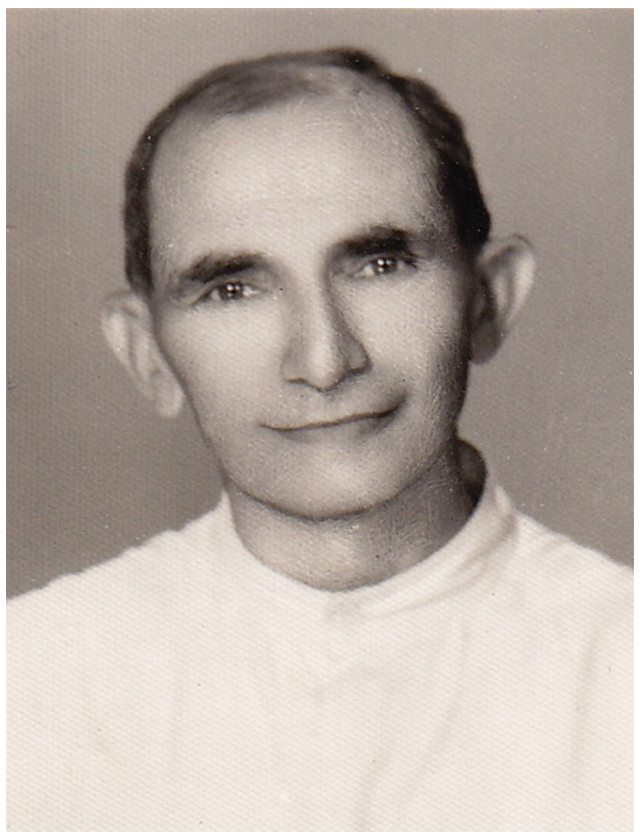
He was born on September 2, 1912 in Rocchetta Tanaro, Asti, Italy.
He made his first religious profession on September 30, 1929 and was ordained priest in Asti on June 29, 1936.
On November 1, 1937, he left for the Philippines. He first became the parochial vicar of Ibaan. He was then assigned as Pastor of Taysan. In 1947, he was in charge of starting the Seminary in San Jose, Batangas. From 1951 to 1958, he was the Superior of the mission. From 1959, he was the pastor of Padre Garcia and collaborator in the seminary. He also suffered greatly because of the Second World War, especially the atrocious death of Fr. Vincenzo Prandi, OSJ and Fr. Antonio Fanchini in 1945.
After almost 28 years in the country, Fr. Bo was transferred to Peru in 1965. In 1967, he was named Master of Novices of the primary group of Peruvian novices at the House of Chosica. Then he started the new Parish of Pornabamba where he remained for seven years, building the Church and its rectory. In 1975, he was named as pastor of Our Lady of Good Counsel in Lima. In 1980 he returned to Pornabamba. Three years after, in 1983, he lent his pastoral services in three parishes of Lima: Buen Consejo, Divino Maestro and Holy Family. His failing health forced him to retire in the Theological Seminary of Apolo in Lima. He peacefully breathed his last on September 17, 2009, a few days before celebrating his 80th anniversary of religious profession.
Rev. Fr. Guido Coletti, OSJ
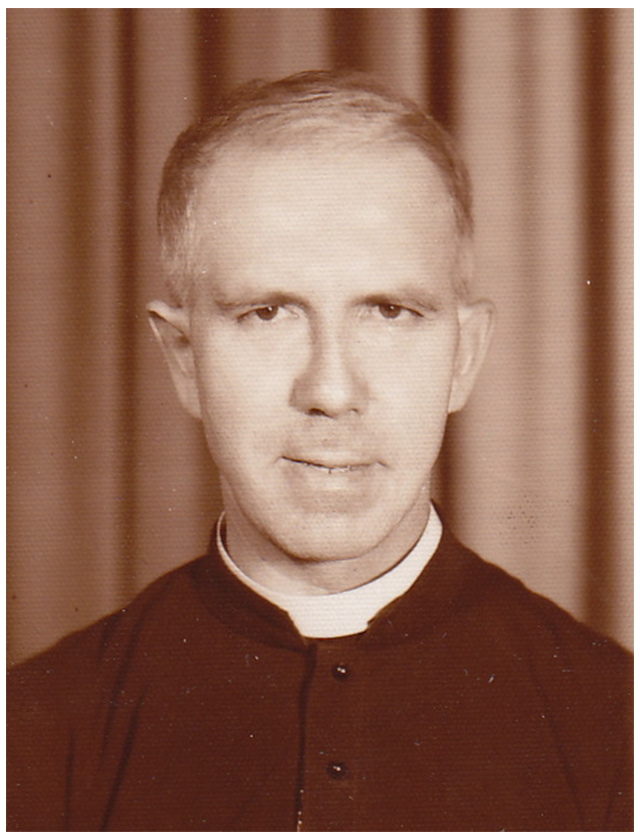
He was born in Torra, Trent, Italy on April 30, 1912.
He entered the Congregation in October, 1925. He made his first profession of the religious vows on September 30, 1931. Then in 1935, he professed the vows perpetually. He was ordained priest on August 1, 1937.
On January 25, 1939, he left Italy for the Philippines. After a brief period in Cuenca, he was assigned as assistant Pastor of Ibaan. A year after he became its pastor. In 1946, he was elected Superior of the missions. In 1949, he was reconfirmed in that office. In 1965, he began the construction of a parish church in Greenhills, Mandaluyong (then part of the province of Rizal). This was the first church outside Batangas. This was formally inaugurated and dedicated in 1967. He became the Economo of the Philippine Delegation from 1972 to 1989. During this period also, he was elected twice as Councilor. He was also credited of building other parish churches, schools, seminaries and convents in the country. He died on November 21, 1996, having lived 65 years as a religious and almost 60 years as a priest.
Rev. Fr. Urro Gotri, OSJ
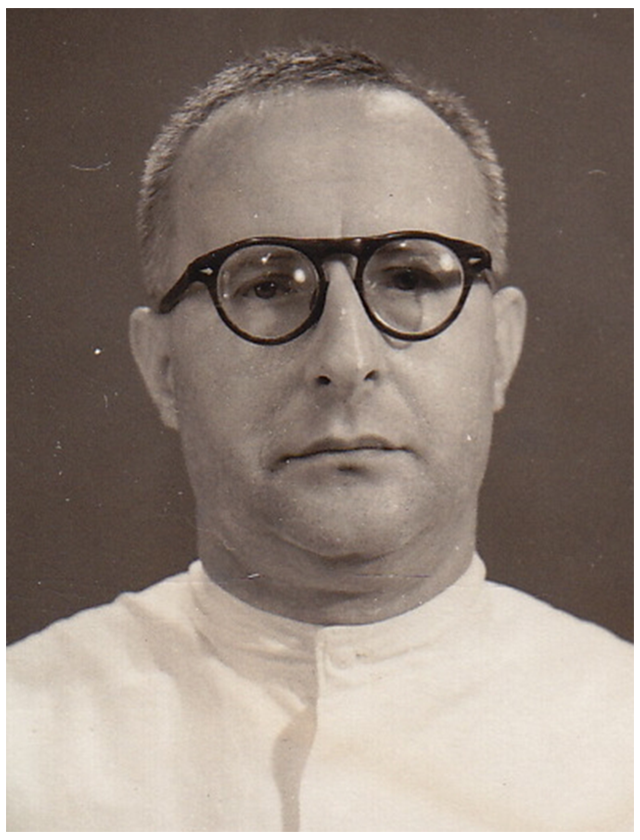
He was born in Torra, Trent, Italy on April 30, 1912.
He entered the Congregation in October, 1925. He made his first profession of the religious vows on September 30, 1931. Then in 1935, he professed the vows perpetually. He was ordained priest on August 1, 1937.
On January 25, 1939, he left Italy for the Philippines. After a brief period in Cuenca, he was assigned as assistant Pastor of Ibaan. A year after he became its pastor. In 1946, he was elected Superior of the missions. In 1949, he was reconfirmed in that office. In 1965, he began the construction of a parish church in Greenhills, Mandaluyong (then part of the province of Rizal). This was the first church outside Batangas. This was formally inaugurated and dedicated in 1967. He became the Economo of the Philippine Delegation from 1972 to 1989. During this period also, he was elected twice as Councilor. He was also credited of building other parish churches, schools, seminaries and convents in the country. He died on November 21, 1996, having lived 65 years as a religious and almost 60 years as a priest.
Rev. Fr. Edoardo Meda, OSJ

He was born in Corbetta, Milan on July 6, 1918.
After his college in Armeno, he was assigned as assistant of the Postulants in Canelli and then of the orphans in Michelerio in Asti. Already then he revealed his great enthusiasm.
During his Theological studies in the Mother House, he founded the “Circolo Missionario” among the clerics and the “Sezione Sofferenti” as an aid to the Missionaries. These are two initiatives and nurtured very much the missionary spirit among his companions and in the Congregation.
After his ordination in 1943, he was sent to the Oratory of Trecate, where he worked among the youth and was also an active Chaplain of the “Partigiani” who were working in that area.
In 1947, he left for the Philippines, thus realizing his missionary ideal. He arrived there after a long journey by ship. He immersed himself immediately in multiple jobs: organizing the youth through catechism in the numerous villages of the Parish of Lumang Bayan (now Padre Garcia), Batangas. Later he was made Parish Priest of Rosario, where he started the construction of a new church, since the Parish church had been taken over by the Aglipayan sect. Because of this, he wanted it big and beautiful, in order to attract Christians to the Catholic faith. But he was not able to finish it, because he was overtaken by serious ailments that were later discovered to be originating from a tumor.
With a heavy heart, he returned to Italy. He was taken good care by his sisters who were also religious nuns in the hospital of Novara. He died in his native town, living for 33 years as a religious and 25 years as a priest.
Rev. Fr. Vito Sorrenti, OSJ

He was born at Polla, Catanzaro, Italy on December 1, 1921.
He first professed the vows in 1928.
Still not ordained priest, he left for the Philippines in 1947. In 1948, he received the sacerdotal order. He was first assigned in the seminary and then in the Parish of San Jose. Then he was assigned as Parish Priest of Taysan and as in-charge of the school.
After twenty years in the country, he returned to Italy and stayed for some years in the Parish of St. Joseph Cafasso in Rome. The he was Parish Priest for nine years in Solofra and assistant pastor in Sesto Florentino. He spent his last years in Nuoro as confessor at the Shrine of Our Lady of Grace. He died on January 9, 1983, living 45 years as a religious and 38 years as a priest.
Rev. Fr. Pasquale Pontelandolfo, OSJ
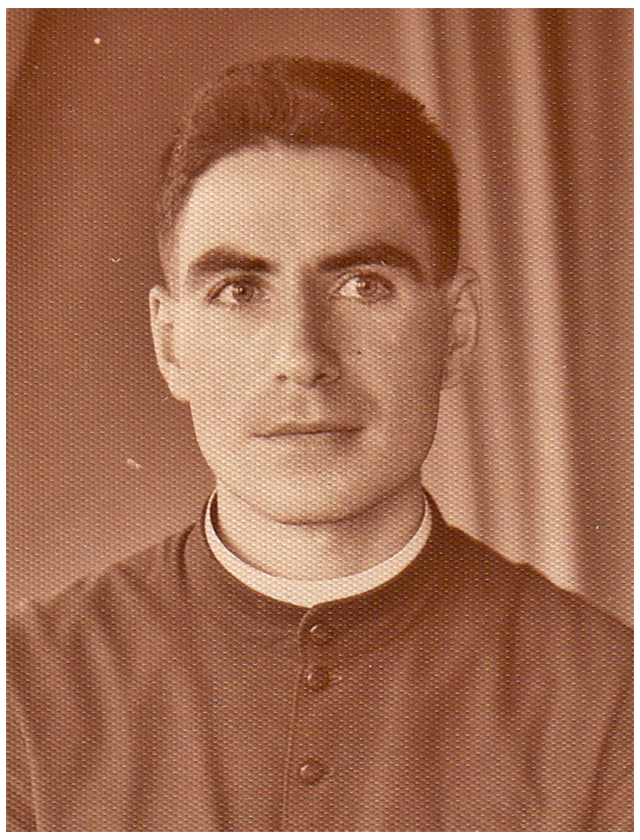
He was born in Riccia, Italy on January 3, 1921.
He entered the seminary of Santa Chiara in Asti in 1934. He made his first religious vows on October 5, 1938. He was ordained as priest on June 23, 1946 in Asti.
On May 6, 1947, he left for the Philippines to reinforce the missionaries who had been decimated by the Second World War. He had his pastoral work from 1947 to 1962 as parochial vicar in Cuenca and in Taysan. Then he was appointed as Pastor in Ibaan, Cuenca and Alupay.
In 1963 he returned to Italy and worked with the Italian emigrants in Belgium. At the end of 1965, he was sent to Peru. He remained there up to his death on September 23, 2011. He died due to a massive heart attack. He lived 73 years a religious and 65 years as priest.
Rev. Fr. Federico Lano, OSJ
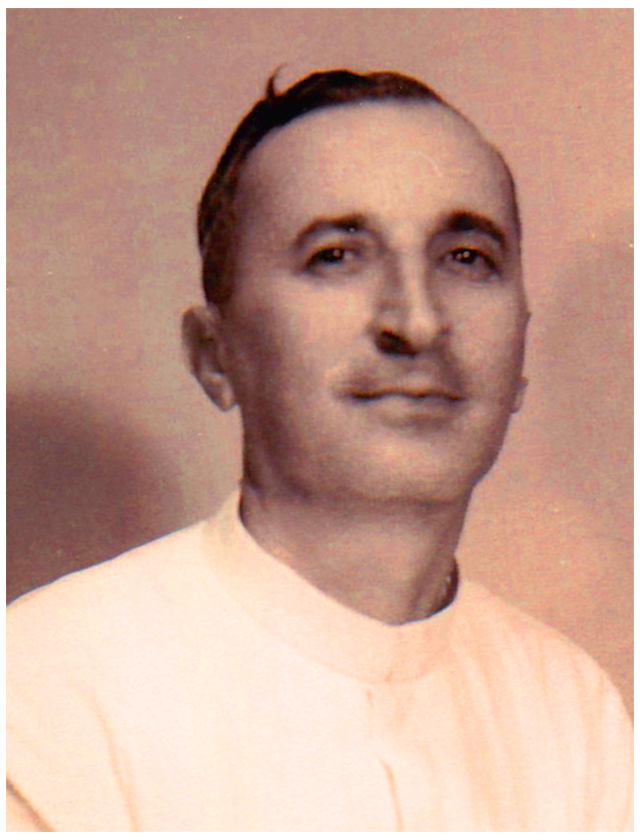
He was born in San Damiano d'Asti on December 3, 1920.
He entered the Congregation on March 21, 1939. He made his first religious profession on September 30, 1940. He was ordained in Asti on June 1948 in Asti, Italy. Two months later, he went to the Philippines where he worked with the young aspirants in San Jose. From 1952, he became Prefect of the “Carissimi” or young aspirants. He was appointed Delegate in March 1959, and at the end of his term in 1962 he returned to the seminary in San Jose as its rector. In June 1966 he returned to Italy where he stayed for five years. Then in July 1971 he went back to the Philippines and was named its Delegate. After finishing his term in 1974, he was appointed as Prefect of the Minor Seminar in San Jose. In 1976, he reentered definitively into Italy.
In Italy, he continued his pastoral services until 1999. Then he retired in the Rest Home in Castelnovo Calcea. Ten years after, on November 13, he met his death serene and prepared, living 69 years of religious life and 61 years of priesthood.
Rev. Fr. Elia May, OSJ
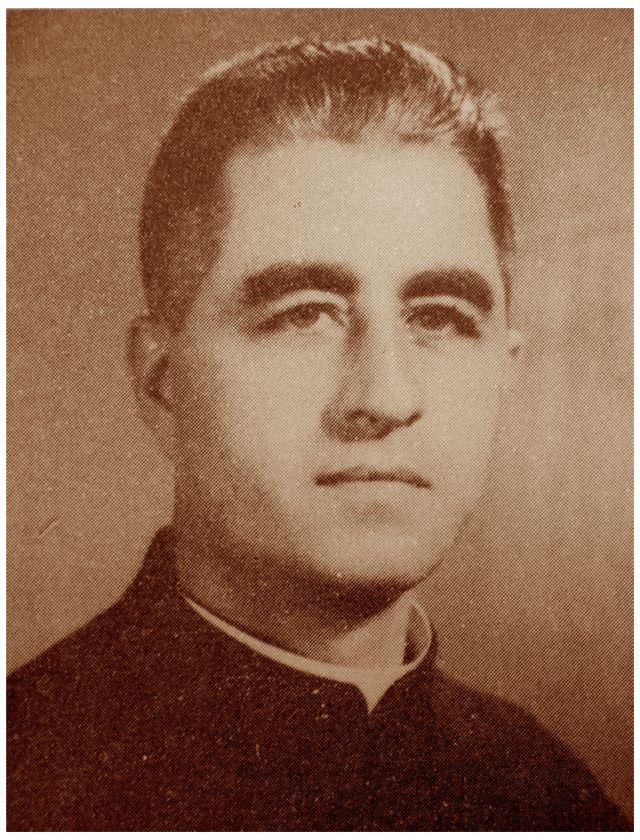
He was born in Schilparo, Bergamo, Italy on February 8, 1920.
He was commonly called in the Philippines as “Monsignor” for having served as episcopal vicar and vicar forane for many years. He was among the last batch of Italian OSJ missionaries who came to the country.
He entered the Congregation on October 17, 1936. He made his first religious profession of vows on September 30, 1940 in Alba, Italy. He professed the vows perpetually on April 2, 1947 in Asti. He was ordained priest on June 6, 1948 at Santuario de San Giuseppe in Asti.
That same year he left Italy as a missionary to the Philippines. He served as assistant parish priest in Taysan, Batangas in 1950. He became the parish priest in San Luis, Batangas in 1954.
After a short period of rest in Italy, he returned to the Philippines in 1960. He was elected secretary of the Philippine delegation in 1962. He was assigned as parish priest of Rosario in 1973. He was elected as episcopal vicar and vicar forane from 1976 to 1979. He was the first councilor and vicar delegate on September 4, 1979. He was spiritual director of the OSJ Cooperators in 1985. He was the economo of the rectory of Rosario-Alupay-Padre Garcia-Taysan. He participated in the beatification of St. Joseph Marello in Asti on September 26, 1994. He was elected second councilor of the Philippine Province in 1995. That year also he was appointed as in-charge of the Oblate Sisters of St. Joseph, in Padre Garcia, Batangas. To take care of his health, he lived with the sisters from 2001 up to the time before his death. He died on March 30, 2007, in Lipa City, 67 years as a religious and 59 years as a priest.
Rev. Fr.Enrico Arturo Tunesi, OSJ
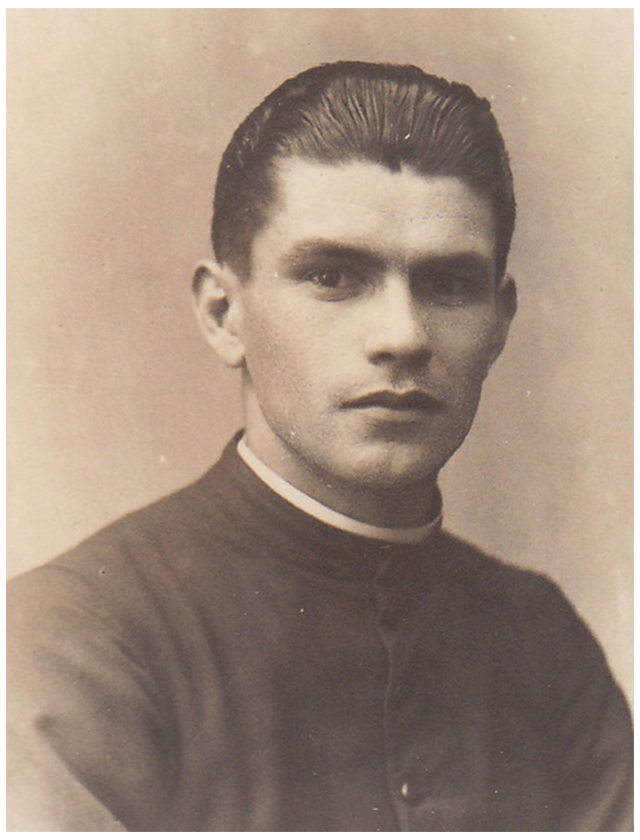
He was born in Arluno, Milan, Italy on November 13, 1922.
He entered the Minor Seminary of Santa Chiara in 1934. He made his first profession on September 30, 1940 and his perpetual vows in 1946. He was ordained a priest in Asti on June 20, 1948.
After a few months he left as a missionary for the Philippines and worked as assistant Pastor and principal of the parochial school in Rosario, Batangas from 1948 to 1958.
Then he went to the mission in Mexico from 1959 to 1970. He was later sent to California where he worked until his death on January 23, 1997. He lived 56 years as a religious and 48 years as a priest.
Rev. Fr. Alan Pearson, OSJ
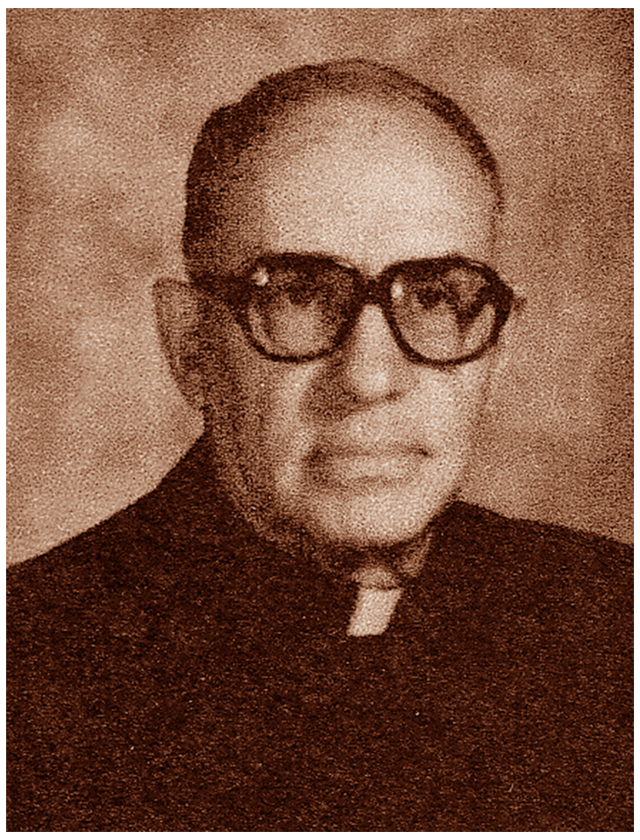
He was born in Riccia, Italy on January 3, 1921.
He entered the seminary of Santa Chiara in Asti in 1934. He made his first religious vows on October 5, 1938. He was ordained as priest on June 23, 1946 in Asti.
On May 6, 1947, he left for the Philippines to reinforce the missionaries who had been decimated by the Second World War. He had his pastoral work from 1947 to 1962 as parochial vicar in Cuenca and in Taysan. Then he was appointed as Pastor in Ibaan, Cuenca and Alupay.
In 1963 he returned to Italy and worked with the Italian emigrants in Belgium. At the end of 1965, he was sent to Peru. He remained there up to his death on September 23, 2011. He died due to a massive heart attack. He lived 73 years a religious and 65 years as priest.
IN MEMORIAM
Born in Jaland, Iloilo, Philippines on 10 October 1935
14 years of Religious life
Died on 12 August 1975 in the hospital in Lipa, Batangas
Buried in the OSJ Ossuary, San Jose, Batangas
Read more
Born in Zarraga, Iloilo, Philippines on 16 June 1947
5 years of Religious Life and almost 2 years of Priesthood
Died in a road accident in San Jose, Batangas
Buried in Zarraga
Read more
Born in Calinog, lloilo, Philippines on 22 August 1957
13 years of Religious life and 9 of Priesthood
Died in Manila on 26 January 1993
Buried in the OSJ Ossuary, San Jose, Batangas
Read more
Born in Atimonan, Quezon, Philippines on 11 February 1909
58 years of Religious Life and 53 years of Priesthood
Died in Lipa on 18 August 1993
Buried in the OSJ Ossuary, San Jose, Batangas
Read more
Born in Rosario, Batangas, Philippines on 5 June 1948
30 years of Religious life and 25 years of Priesthood
Died in Biñan, Laguna on 22 October 2001
Buried in the OSJ Ossuary, San Jose, Batangas
Read more
Born in Taal, Batangas on 6 July 1957
34 years of Religious Life
29 years of Priesthood
Died in the Philippine Heart Center, Quezon City
Buried in the OSJ Ossuary, San Jose, Batangas
Read more
Born on 8 September 1932 in New Lucena, Iloilo
55 years as Religious and 51 years in the priesthood
Burried at the OSJ Ossuary in San Jose, Batangas
Read more
Born on 15 March 1930 in San Pablo, Laguna
57 years as a religious and 54 years as a a priest
Died on 26 February 2019 in Lipa City
Burried in the OSJ Ossuary, San Jose, Batangas
Read more
Born on 1 August 1967 in T'boli, South Cotabato
27 years as a religious and 21 years as priest
Died on 6 January 2020 in Pontianak, West Kalimantan, Indonesia
Buried in in the OSJ Ossuary, San Jose, Batangas
Read more
Born on December 6, 1955 in Salao, Rosario, Batangas
35 years as a priest
Died on 14 February 2020
Buried in Rosario, Batangas
Read more
Born on 27 April 27 1947 in Sara, Iloilo
44 years as Religious and 41 years in the Priesthood
Died on 12 Mar 2020 in Lipa City
Buried in in the OSJ Ossuary, San Jose, Batangas
Read more
Born Zarraga, Iloilo on 04 September 1952
44 years of Religious life and 41 years of priesthood
Died on 18 September 2020 in San Jose, Batangas
Buried in in the OSJ Ossuary, San Jose, Batangas
Read more
Born in Zarraga, Iloilo, Philippines
on 24 August 1936
57 years as religious and 53 years as priest
Died on 2 October 2020 in Lipa City
Burried in the OSJ Ossuary, San Jose, Batangas
Read more
Born in Tigbauan, Iloilo
on June 12, 1959
40 Years of Religious Life
37 of Priesthood.
Died in Casa Marello, San Jose, Batangas
Buried at the OSJ Ossuary
San Jose, Batangas
Read more
Born in San Jose, Batangas
on September 13, 1979
21 Years of Religious Life
15 Years of Priesthood
Died in San Juan, Batangas
Buried at the OSJ Ossuary
San Jose, Batangas
Read more
Br. Lino Luminate, OSJ
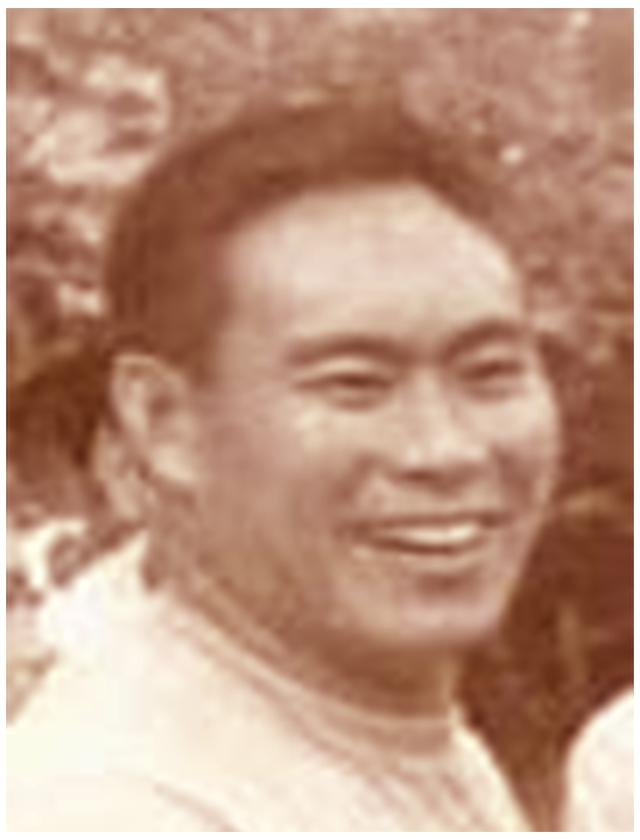
He was born in Jaland, Iloilo on October 10, 1935.
Though at first he wished to be a priest, he asked to be an OSJ brother. He entered the Congregation after finishing high school. In 1960, he was sent to Italy for his Novitiate in Armeno. In 1961, he made his first religious profession and returned to the country.
He took up different tasks in the community of San Jose, Batangas. He was the economo of the seminary, taught catechism in public schools, took care of the church and the liturgical services in the Parish. He was also an extraordinary minister of the Eucharist. He was also in-charge of the formation of a group of Brother aspirants. He even managed an agricultural farm near the OSJ school in Padre Garcia.
On August 12, he died suddenly at a very young age of 40, beloved by all.
Close
Rev. Fr. Leo Pernecia, OSJ
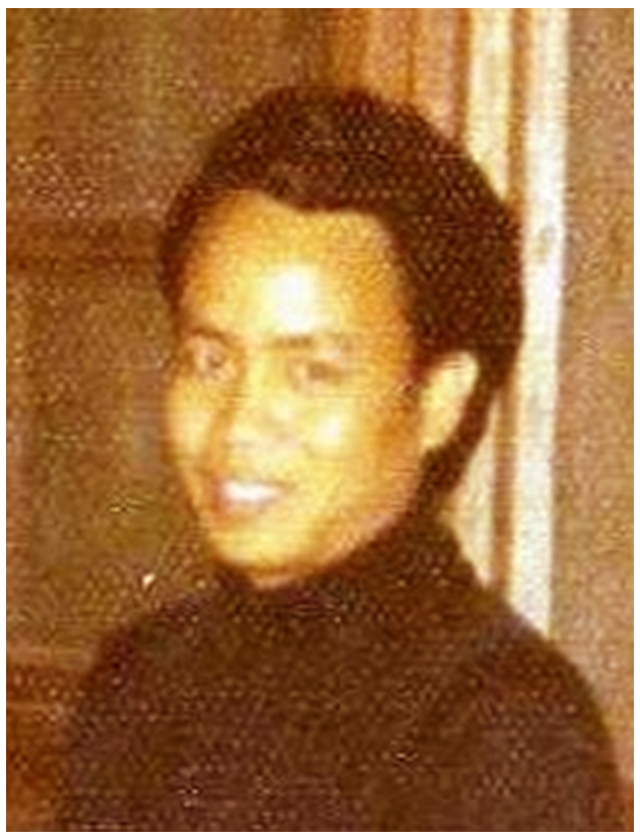
He was born in Zarraga, Iloilo on June 16, 1947.
He attended the Minor Seminary in San Jose, Batangas. He went to Italy for his novitiate and theological studies.
After he received his Diaconate, he returned to the Philippines and in 1976 he was ordained in his native town.
He was immediately put in-charge of vocation guidance and formation in the Minor Seminary, San Jose, Batangas. Part of his responsibility as a formator was to drive the seminarians for classes at the Diocesan Seminary in Lipa.
On August 25, 1978, as he was re-entering from Lipa on his motorcycle and was about to turn down the street leading to San Jose, he was knocked down by a heavy six-by-six truck going in the opposite direction. He died on the spot. He was 31 years old, five years as a religious and barely two years as a priest.
Rev. Fr. Felix Celeste, OSJ
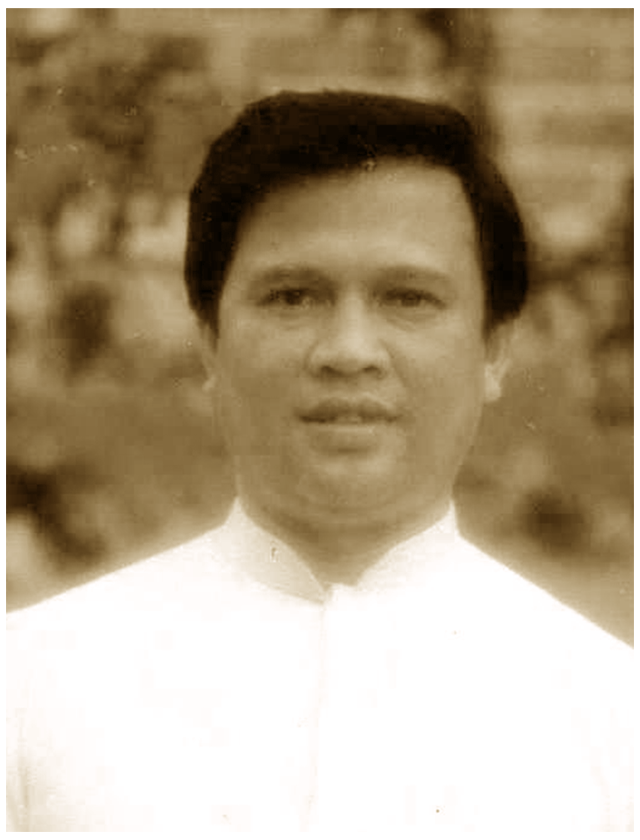
He was born in Calinog, Iloilo on August 22, 1957.
He made his first religious profession on May 30, 1980 at St. Anthony de Padua Church, Antipolo. He professed the vows perpetually at the OSJ Formation Center (now OSJ College Seminary), Marawoy, Lipa City on May 29, 1983.
He was ordained priest in his hometown of Calinog on July 16, 1984. He left for Italy for a two-year specialization course in Theology. In 1986 he returned to the country and was put in charge of formation. In 1987 he was assigned as spiritual director of the seminarians of the seminarians both in Lipa and in San Jose. He was appointed as Rector and Prefect of the OSJ Minor Seminary (1988). Then in 1989 he was briefly assigned as Economo in Victoria Homes, Muntinlupa.
In 1990 he became the Parish Priest of the Most Holy Rosary Parish, Padre Garcia, Batangas. He was also appointed as first councilor and Provincial Vicar in 1992. However, during this period also that symptoms of a terrible disease started to show in him. This sickness brought him to his death on January 26, 1993, living 13 years as a religious and nine years as a priest.
Rev. Fr. Lucio Aguilar, OSJ
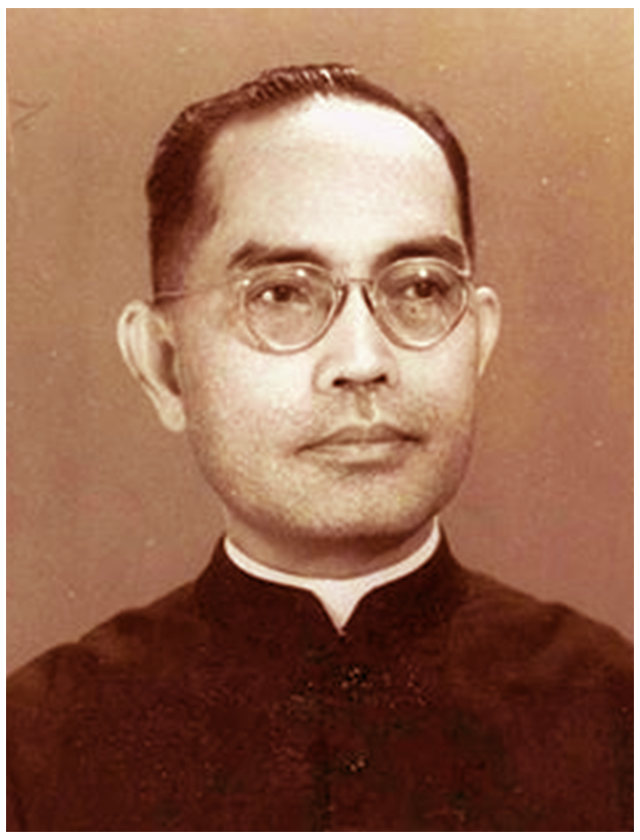
He entered the Congregation in August of 1940. He was under the tutelage of the late Fr. Antonio Fanchini, OSJ in Rosario, Batangas. He was then sent to Italy for his formation. He made his first profession of vows on September 30, 1935. Exactly four years after, he professed the vows perpetually. On June 30, 1940 he was ordained priest. He still needed to finish his theology until 1941. He stayed for five more years in Italy serving in the religious houses of Alba, Santa Chiara and Canelli.
At the end of June 1946, he returned to the country. He was first assigned as assistant pastor in San Jose Batangas as well as given responsibility in the seminary. In 1961 he was appointed as Parish Priest of Padre Garcia, but he was named Delegate of the Philippine OSJ Mission in 1962. When his term ended, he was pastor of San Jose and, for some time, also Episcopal Vicar of the Diocese. Abandoning his direct parochial responsibilities, he continued to help in the parish and in hearing the confessions of the seminarians.
After being hospitalized a few weeks for heart problems, he died peacefully on August 18, 1993.
He died in Asti, Italy on June 13, 1973.
Rev. Fr. Sancho Sison, OSJ
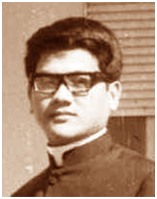 He was born in Rosario, Batangas on June 5, 1948.
He was born in Rosario, Batangas on June 5, 1948.
He entered the Congregation as a minor seminarian in San Jose, Batangas. In 1970 he was sent to Rome for his novitiate. He made his first religious profession in Castelnuovo Calcea, Asti on September 30, 1971. Then he returned to the country for his theological studies. He professed the vows perpetually in 1974 at St. Joseph Church, San Jose, Batangas. On March 15, 1976 he was ordained priest in Rosario Parish Church. His first priestly duty was as associate pastor of Santuario de San Jose in Greenhills and at the same time as prefect of the seminarians. In 1979, he was appointed as master of novices in Antipolo. Later, he was named parish priest of San Juan, Batangas. In 1982, he was elected second delegate councilor and was in charge of the OSJ schools. For two years (1984-1986 he went to Pittston, United States of America for reasons of studies and while there was appointed as associate pastor of St. Rock. In 1986, he was named Delegate of the OSJ in the Philippines. During the Twelfth General Chapter in 1987, the Philippine delegation was recognized as a Province. Consequently, he became the first provincial superior. He was confirmed for a second term in 1989. After three years as provincial superior, he was elected as vicar provincial and was named as the first pastor of Our Lady of Fatima Parish in Elvinda Village until 1995. Then he returned to Pittston for three years. In 1998, he was again nominated as provincial superior. After his term, he became a resident priest at the OSJ Theologate, South City Homes, Biñan, Laguna.
On October 22, 2001, he was forced to make his morning jogging inside the seminary hall due to a heavy rainfall. While taking a rest, he suffered a brain aneurysm that led to a cerebral hemorrhage causing his death. He was only 53 years old, living 30 years as a religious and 25 years as a priest.
Rev. Fr. Deodoro Dawis, OSJ
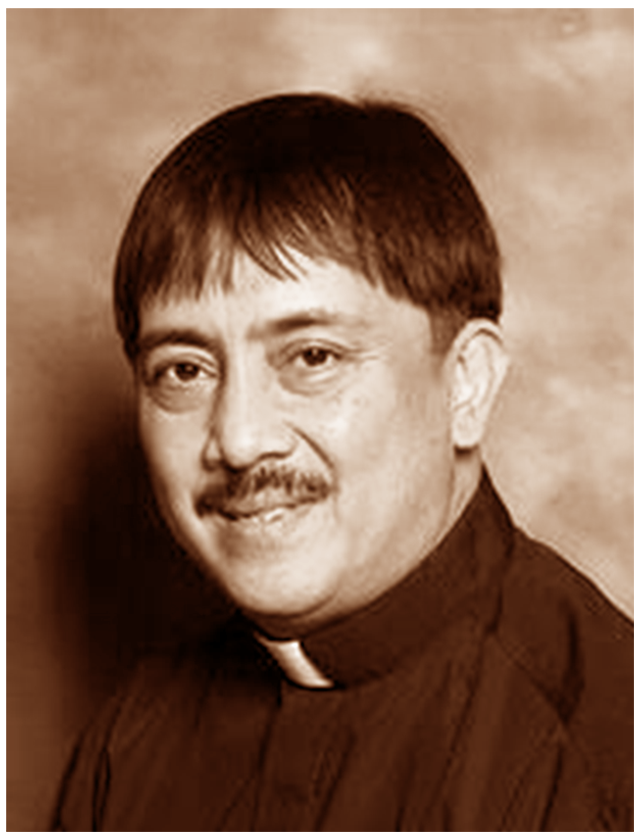
He was born on July 6, 1957 in Taal, Batangas.
He entered the Congregation in 1969. He made his first religious profession of vows in 1979. He professed the vows perpetually on May 29, 1983. He was ordained priest on July 6, 1984. He was assigned as Prefect of Discipline at the OSJ Minor Seminary. In 1986, he was named as its rector. From 1989 to 1993, he was appointed as pastor of St. Joseph the Patriarch Parish, San Jose, Batangas. In 1993, he was assigned as pastor of the Blessed Sacrament Parish, South City Homes, Biñan, Laguna. He was elected as Third Provincial Councilor in 1995 and was appointed as director in-charge of the promotion of the devotion to St. Joseph and St. Joseph Marello. Then he was appointed as parish priest of St. James the Greater Parish, Ibaan, Batangas. In 2001, he was appointed as parish priest of the Most Holy Rosary Parish, Padre Garcia, Batangas. Three years after (2004), he was named as rector and pastor of Our Lady of Most Holy Rosary Parish, Rosario, Batangas. He was appointed rector of the junior professed brothers who had just transferred to Tagaytay City. In 2009, he was appointed as parochial vicar of San Juan Nepomuceno Parish, San Juan, Batangas. A year after (2010) he was transferred to St. Anthony de Padua Parish, Antipolo City where he remained until his death.
He passed away from a lingering heart condition on March 10, 2013, living 34 years as a religious and 29 years as a priest.
Rev. Fr. Adriano Sobremisana, OSJ
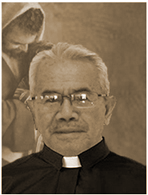
Fr. Ading, or to many, "Lolo Ading", was born on September 8, 1932 to Hermogenes Sobremisana and Socoro Sortido. He hailed from Baclayan, New Lucena, Iloilo.
Though his father wanted him to be a soldier. But because of his stature in height, his father realized that God had another plan for his son--for indeed he became a soldier of Christ. After finishing his third year in high school in, he entered the in seminary of Oblates of St. Joseph, San Jose, Batangas. In 1960, he finished his philosophical studies at the San Jose Seminary which is under the administration of the Society of Jesus, he entered the Novitiate in Armeno, Novara, Italy. A year after he made his first profession of vows. He professed the vows perpetually on October 4, 1964. He completed his theological formation and was finally ordained on March 19, 1965.
He returned to the Philippines in 1965 and was assigned as assistant parish priest of San Jose Church and as a confessor at the Seminary, both in San Jose, Batangas. The following year he was assigned as parish priest of Sto. Rosario Parish, Padre Garcia, Batangas. After eight years he was installed as parish priest of Holy Family Parish, Alupay, Rosario, Batangas. In 1984, he became the pastor of San Juan Nepomuceno Parish, San Juan, Batangas. After 13 years, he was appointed as Rector of the OSJ Theologate in Biñan, Laguna. He became the spiritual director and confessor of OSJ Minor Seminary and OSJ College Seminary.
In 2016, his health began to detoriate. He stayed first with Oblate Sisters of St. Joseph in Padre Garcia, Batangas. Then he was transferred to Casa Marello on June 2016. Here he spent his last days of his life.
Fr. Ading returned to his Creator on January 13, 2017, at 9:30 in the evening. His death truly brought forth a great sorrow in the hearts of his confreres and as well as the multitude he had served throughout the almost-fifty-two years as a priest.
Among the possesions he left was a ledger recording the number of Masses he celebrated spanning the 51 years of his priestly ministry--a total of 51,051. It was a feat proving his dedication and availability. He would be forever remembered for his jovial outlook in life, especially his favorite words, "OSJ forever!". In one interview he was asked what his secret in persevering as a religious and as a priest, he sheepishly replied, "My joy in being an Oblate of St. Joseph!"
Rev. Fr. Raymundo de la Cruz, OSJ
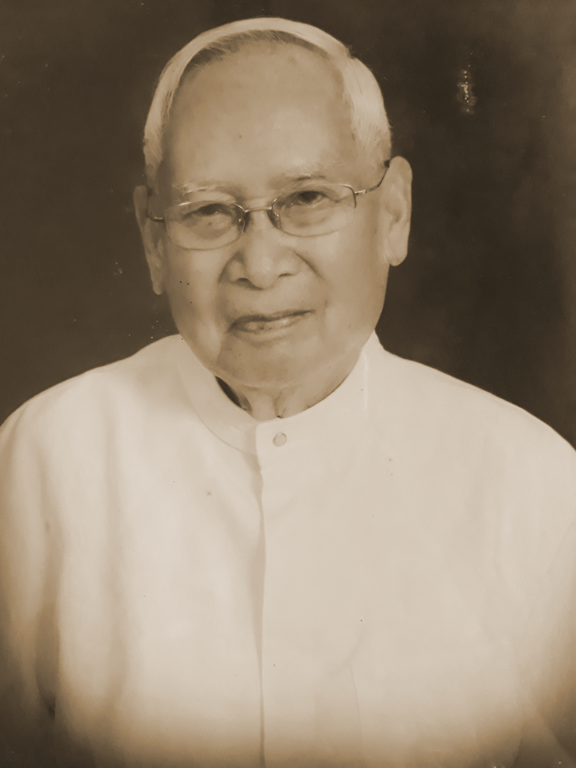
He was born on March 15, 1930 in Sta. Isabel, San Pablo, Laguna to Francisco de la Cruz and Hermogena Gumafelix.
He finished his elementary studies at Sta. Maria Central School in Bulacan in 1948 and his secondary education at the St. Joseph Missionary Institute, San Jose, Batangas in 1952.
In 1960, he earned his philosophical degree at the San Jose Seminary, Quezon City and his Theology at the Studentato Internazionale degli Oblati di San Giuseppe, Rome in 1965. He also had a licentiate in theology earned at the Pontificia Universitas Lateranensis in Rome in 1966 and another in a Spirituality course in 1981 at the Pontificium Insitutu, Spiritualis Teresianum.
He entered the Congregation as a minor seminarian in 1953. He was accepted to the novitiate on September 29, 1960. He made his first profession of vows on September 30, 1961. He professed the vows perpetually on October 4, 1964. He was ordained priest on March 19, 1965 in Rome.
He had served as parochial vicar of Santuario de San Jose, Greenhills (1966-1967), of San Jose, Batangas (1968-1970) and of San Juan, Batangas (1998-2002). He became pastor of Our Lady of Mercy Parish, Taysan, Batangas (1970-1981), of the Holy Family Parish, Alupay, Rosario, Batangas (1983-1993); and of San Juan Nepomuceno Parish, San Juan, Batangas (1993-1998).
He was elected Vicar delegate in 1974 and in 1986 (becoming the first vicar provincial). He was also the novice master from 1981 to 1983.
He was also known for his love of books and he himself was a writer and a chronicler.
Fr. Ray, or Lolo Ray to many, is looked up by the Province for his intellect, wisdom and inspiration. He spent his final years with the community of the Oblates of St. Joseph College Seminary in Lipa City, Batangas.
On the night of February 26, 2019, he died peacefully. He was 88 years old, 57 years as a religious and 54 years as a a priest.
Rev. Fr. Ray Sales, OSJ
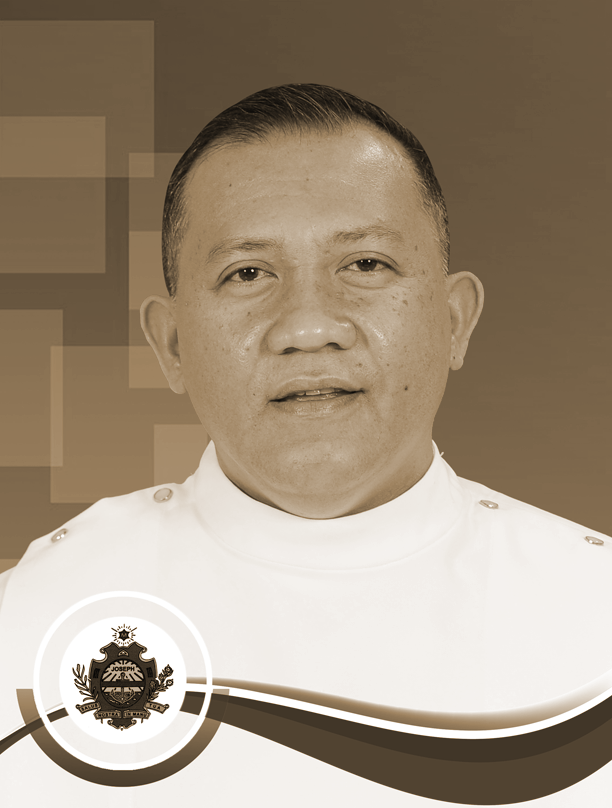
Fr. Ray was born on August 1, 1967 in T'Boli, South Cotabato.
He entered the seminary in Lipa City in 1986. He made the first religious profession on May 16, 1992. He made his perpetual profession of vows to the
Congregation on January 23, 1997. He was ordained priest on
April 13, 1998 at the Shrine of St. Joseph the Patriarch in San Jose,
Batangas. From 1998 to 2001, he was assistant parish priest and
economo of Santuario de San Jose, Mandaluyong City. Then in
2001 he was assigned as priest-in-charge of the proposed parish
of the Spousal of Mary and Joseph in Buntatala, Iloilo City. He
expedited the organization of the parish by uniting and giving
formation to the people as a future community of God. He also
worked hard for the construction of the parish edifice. When
the parish was erected in 2003, he became its parish priest until
2007. Then he became rector and parish priest of St. Anthony of
Padua Parish and assistant school director of Don Antonio de
Zuzuarregui Memorial Academy in Antipolo City, from 2007 to
2010. He was parish priest of the Holy Family Parish and assistant
school director of Santo Rosario Academy in Alupay, Rosario,
Batangas from 2010 to 2013. He was assigned as rector and
priest-in charge of the OSJ mission territory in Cabayugan, Puerto
Princesa City from 2013-2014. In 2016, he was sent to the newlyopened Oblate mission in Karangan, West Kalimantan, Indonesia
and was assigned as the parish priest of the newly erected St.
Joseph Parish. As one of the pioneers of the Indonesian mission,
he endured the difficulty of working with people of different
context and culture, learning Bahasa language, and responding
to the pastoral demands of the area.
On the morning of January 1, 2020, Fr. Ray felt severely ill and
asked to be brought to the nearby clinic. As his condition
worsened, he was rushed to St. Anthony Hospital in Pontianak.
He was diagnosed with hemorrhagic stroke due to aneurysm. He
immediately underwent a brain surgery at 3 o‘clock of the same
day. For five days under critical condition, he received the last
sacrament and was surrounded by the presence of the confreres,
the priests and religious, and the faithful of Pontianak. At 4:45
o‘clock in the morning of January 6, he breathed his last. His
remains were transported back to the Philippines on January 10.
He lived 27 years of his life as a religious and
21 years as a priest.
Rev. Fr. Mario Cueto, OSJ

Fr. Mario was born on December 6, 1955 in Salao, Rosario, Batangas.
He enter the seminary in 1975. He was accepted to the novitiate on May 30, 1979. He was ordained as priest on June 15, 1984 at the Holy Family Parish, Alupay, Rosario, Batangas. He was in fact the first priest who came from this parish.
From 1984 to 1985, he was assigned at the Our Lady of the Rosary Parish, Rosario, Batangas. Then was transferred to the Most Holy Rosary Parish, Padre Garcia, Batangas where he stay until 1990. In 1990, he went to Lagos, Nigeria to open the mission. After six years, he returned to the Philippines. However, he decided to leave the community.
While outside the Institute, he served in the Dioceses of Parañaque and Kalookan. But due to his prevailing diabetes, he was forced to retire to his family's home in Salao, Rosario, Batangas.
On February 14, 2020, he returned to his Creator a priest for 35 years.
Rev. Fr. Jose Vidal Apin, OSJ
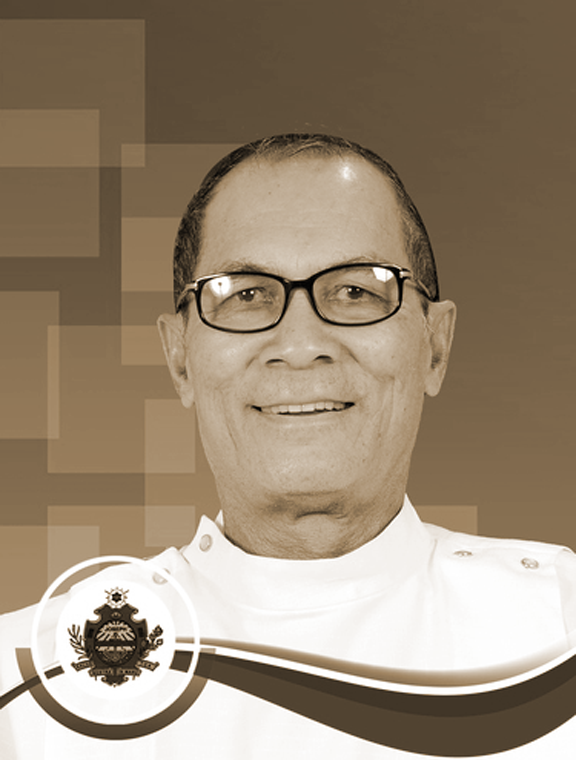
Fr. Joey was born on April 27, 1947 in Sara, Iloilo.
He entered as an aspirant at the St. Joseph Mission Institute (Minor Seminary of today) in San Jose, Batangas in 1969 at the age of 22. He took up his philosophical studies at the University of Santo at St. Joseph Mission Institute
Tomas in Manila from 1971 to 1974. Then he spent the novitiate at the
OSJ Generalate in Rome in 1974. He made the first profession of the
vows on September 30, 1975. He studied theology at the Angelicum
in Rome from 1975 to 1978. He made the perpetual profession of the
vows on October 5, 1978 after which he returned to the Philippines. On
December 9, 1978, he was ordained to the priesthood at St. Joseph the
Patriarch Parish in San Jose, Batangas.
After his ordination, Fr. Joey was assigned as assistant parish priest of
Santuario de San Jose in Greenhills. In 1980 he was assistant parish
priest of St. James the Greater Parish in Ibaan, Batangas. From 1981
to 1984 he was assigned in the College Seminary in Lipa City as
vocation director. In 1984, he was rector and prefect in the College
Seminary. In 1985, he was the postulant director. From 1986 to 1989,
he was appointed as Novice Master. In 1989 to 1991 he was assigned
as assistant parish priest of San Juan Nepomuceno Parish in San
Juan, Batangas. From 1991 to 2000 he was appointed as the priestadministrator of St. Anthony of Padua quasi-Parish in Antipolo City and
the rector of the religious community there. In 1994 he was elected as
one of the Councilors of the Province. In 1998 he was elected as the
Vicar Provincial. From 2000 to 2004, he was appointed as rector and
parish priest of St. Joseph the Patriarch Parish in San Jose, Batangas.
From 2004 to 2007, he was the parish priest of Our Lady of Fatima
Parish in San Pedro, Laguna. In March 2007 he willingly rendered his
service in Asti, Italy and was assigned as in-charge of the Cappellania
di San Giuseppe Marello. Then from 2007 to 2010 he was assigned in
Imperia as assistant parish priest and administrator of the parish of
Monte Grazie and in-charge of the pastoral center of St. Joseph Parish.
In 2010 he returned to the Philippines and was assigned at the College
Seminary in Lipa City as postulant director. From 2010 to 2013, he was
rector and parish priest of San Juan Nepomuceno Parish in San Juan,
Batangas. From 2013 to 2016, he was rector and parish priest of the
Spousal of Mary and Joseph Parish in Iloilo City. From 2016 to 2018,
he was the parish priest of San Jose Parish in Dinalupihan, Bataan.
From 2018 to 2019, he was a resident priest at OSJ House of the Junior
Professed in Amadeo, Cavite. In 2019, he was appointed as confessor
of the seminarians of the OSJ College Seminary in Lipa City.
On March 12, 2020, at around 8 o‘clock in the evening, the confreres checked
on him and he was found lifeless in his room, serenely lying on his bed.
Rev. Fr. Napoleon Jinon, OSJ

Fr. Pol entered the seminary in San Jose in 1969. He took up philosophy at the University of Sto. Tomas from 1971 to 1974. He entered the novitiate in 1974 at the OSJ Generalate in Rome. He had his first profession of vows on September 30, 1975. He took up theology at the Angelicum in Rome from 1975 to 1978. After finishing his studies, he returned to the Philippines and had his perpetual profession on October 7, 1978. He was ordained priest on December 9, 1978.
He was assigned as prefect of the seminarians of the newly opened OSJ Formation Center (College Seminary) in Lipa City from 1978 to 1982 and was the rector there from 1982 to 1984. He was appointed as Novice Master from 1984 to 1986 at Marello Novitiate House in Muntinlupa City. He became the first parish priest of L‘Annunziata Parish in Muntinlupa City from 1985 to 1989. Then he served as rector and parish priest of St. James the Greater Parish in Ibaan from 1989 to 1993. He was appointed as Provincial Superior from 1992 to 1995 and was reappointed for a second term, from 1995 to 1998. As Provincial Superior, he headed the Philippine delegation during the beatification of the Founder in Italy in 1993. He was also one of the capitulars during the 13th General Chapter of the Congregation in 1994. He was in-charge of the Cooperators from 1995 to 1998. After his term as Provincial Superior, he served as rector and parish priest of Santuario de San Jose in Greenhills from 1998 to 2004. He was once again appointed as rector and parish priest of L‘Annunziata Parish from 2004 to 2007; parochial vicar and economo of Santuario de San Jose in Greenhills from 2007 to 2010; parochial vicar of St. Joseph the Patriarch Parish in San Jose from 2010 to 2013; rector and parish priest of St. James the Greater Parish in Ibaan from 2013 to 2016; and resident priest of St. Joseph the Patriarch Parish in San Jose from 2016.
In 2015 he started undergoing dialysis due to kidney failure and had a kidney transplant in 2018. In 2020 he was admitted several times in the hospital due to his unstable health condition. He peacefully passed away due to cardiac arrest on September 18 at 3:45 in the morning in San Jose, Batangas.
Fr. Alfredo Piad, OSJ
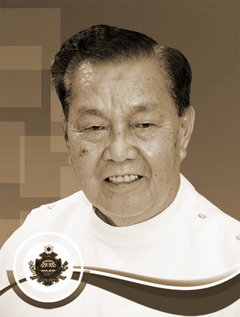
Fr. Fred or Lolo P entered the St. Joseph Mission Institute (Minor Seminary) in San Jose in 1955. Then he took up his philosophical studies at the Jesuit‘sSan Jose Seminary in Quezon City from 1958 to 1962. He entered the novitiate in Armeno, Novara, Italy in 1962. He had his first religious profession on September 30, 1963. He took up theology at the OSJ Studentato Internazionale in Rome, Italy from 1963 to 1967. He had his perpetual profession of the vows on October 2, 1966. He was ordained priest on March 18, 1967.
He returned to the Philippines after his ordination and was assigned as assistant parish priest of Santuario de San Jose in Greenhills and prefect of discipline of the college seminarians from 1967 to 1968. Then he was assigned as assistant parish priest of Our Lady of the Most Holy Rosary Parish in Rosario from 1968 to 1970. He became the parish priest of San Isidro Labrador Parish in Cuenca from 1970 to 1974.
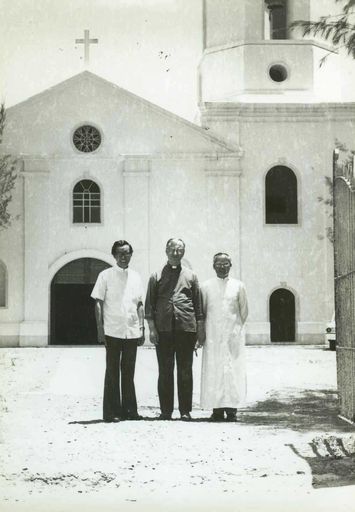
Fr. Fred (far left) with Fr. Severino Dalmaso, OSJ and Fr. Ray Dela Cruz, OSJ
He was appointed as Superior Delegate from 1974 to 1977, and was reappointed for a second term, from 1977-1979. As Superior Delegate, he participated in the 10th General Chapter of the Congregation in Rome in 1975. He also served as the rector of St. Joseph Mission Institute from 1974 to 1978.
Then he became parish priest of San Juan Nepomuceno Parish in San Juan from 1979 to 1981. He became parish priest of St. James the Greater Parish in Ibaan from 1981 to 1989. During this time, he became active in the Cursillo Movement and was appointed as the Episcopal Delegate of the Cursillos of the Archdiocese of Lipa in 1989. He was elected as a delegate to the 11th General Chapter of the Congregation in 1981. He was elected as Vice-Delegate Superior from 1982 to 1986. He then served as rector of the OSJ Formation Center (College Seminary) from 1989 to 1992; rector and prefect of the theology students in Biñan from 1992 to 1993; and parish priest of Christ the King Parish in San Pedro, Laguna from 1993 to 1998.
 When the Province opened its mission in Jaro, Iloilo, he was sent there from 1998 to 2001 to form the people in the area into a community and prepare them in the establishment of the future parish. Then he was assigned as assistant parish priest of St. Joseph the Patriarch Parish and spiritual director of the OSJ Minor Seminary in San Jose from 2001 to 2002; assistant parish priest of Christ the King Parish in San Pedro from 2002-2003; assistant parish priest of Our Lady of Fatima Parish in San Pedro from 2003-2007; and spiritual director and confessor of the College Seminary in Lipa from 2007 and there he retired.
When the Province opened its mission in Jaro, Iloilo, he was sent there from 1998 to 2001 to form the people in the area into a community and prepare them in the establishment of the future parish. Then he was assigned as assistant parish priest of St. Joseph the Patriarch Parish and spiritual director of the OSJ Minor Seminary in San Jose from 2001 to 2002; assistant parish priest of Christ the King Parish in San Pedro from 2002-2003; assistant parish priest of Our Lady of Fatima Parish in San Pedro from 2003-2007; and spiritual director and confessor of the College Seminary in Lipa from 2007 and there he retired.
He suffered some inevitable ailments due to aging and was taken care of by the confreres. He weakened gradually and, on October 2, 2020, at eight o'clock in the morning he peacefully returned to the Creator.
Fr. Eliodoro Tubesa, OSJ

Entered the Congregation at a young age, he attended secondary and philosophical studies at the Seminario San Francis de Sales (Lipa, Batangas). On May 30, the Novitiate year begins in San Jose and May 30, 1982 makes his first religious profession. He completed his theological studies at the Pontifical University St. Thomas in Manila, he made his perpetual profession on May 29, 1985 and was appointed as the assistant for the students of philosophy at the seminary of Marawoy (Lipa City).
On June 14, 1986 he was ordained a priest at the Sanctuary of St. Joseph, in San Jose, Batangas.
He carried out various tasks for the benefit of the Congregation and of the Church not only in his homeland but also in the overseas missions. From 1987 to 1989 he worked on the vocation promotion of the Philippine Province by turning around the country and bringing new aspirants to the congregation. In 1989 he arrived in Rome to prepare himself to be the master of novices of the Province; an assignment that he performed from 1990 until 1993. After a few years off community, in 1996, he went to Italy to prepare and he left as a missionary in Nigeria.
His first assignment, in 1997, was the vicar of the parish church at St. Mary, Isolo, Lagos. In May of 2000 he was appointed rector of the same house. In 2003 he was appointed councilor and treasurer of the Delegation. In the same year he was appointed parish priest of St. Mary's and rector of the community for the second term; he held these positions until 2010. In 2006 he participated in the 15th General Chapter as a representative of Nigeria. In the same year he was appointed as Superior Delegate for a three-year term and in charge of the formation of the Delegation.
At the end of his mandate as Delegate, he was appointed in 2010 councilor and economo of the Delegation and parish priest of the Parish of Saints Peter and Paul.
In 2012 he returned to the Philippines and after a time of rest and of secondary assignments, in 2015 he offered his availability for the new mission that the Philippine Province opens in Indonesia. He is the first pastor and rector of the community of Saint Yusuf parish, Karangan, West Kalimantan, in the Archdiocese of Pontianak, Indonesia.
In August 2017, he got a serious illness which reduced him to a state of coma for more than 5 years, until at the time of his death, which occurred in Casa Marello (Retirement Home of the Philippine Province) lovingly cared by the brothers.
Fr. Elmer Quizon, OSJ

Rev. Fr. Elmer Custodio Quizon, OSJ was born on September 13, 1979, in Salaban, San Jose, Batangas. He is the son of Felizardo Hernandez Quizon and Trinidad Sarmiento Custodio Quizon.
After his secondary education at St. James Academy – Ibaan, Fr. Elmer entered the Congregation of the Oblates of St. Joseph as an Orientandus in June 1996. He took his philosophical studies at St. Francis de Sales Regional Seminary from 1992 to 1996 and his theological studies at Don Bosco Center of Studies from 2003 to 2007.
He had his entrance to the Postulancy on November 12, 2000 and his entrance to the Novitiate of the Congregation on May 18, 2001. He professed the vows of poverty, chastity, and obedience for the first time on May 17, 2002. He professed the vows perpetually on September 8, 2007. He was ordained as a deacon on December 3, 2007. On May 14, 2008, Fr. Elmer was ordained to the Presbyterate in The Archdiocesan Shrine and Parish of St. Joseph the Patriarch, San Jose, Batangas.
From 2007-2008, Fr. Elmer served as the economo of the Our Lady of Mercy Parish, Taysan, Batangas. From 2008-2010, he was assigned as the economo of Our Lady of the Holy Rosary Parish, Rosario, Batangas. He, then, transferred to San Isidro Labrador Parish, Nagwaling, Pilar, Bataan and was the economo of the parish from 2010-2011. From 2011 to 2013, Fr. Elmer was the priest-in-charge of St. Joseph House of Spirituality, Isabela. He was a resident priest of Sto. Niño Parish, Alas-asin, Mariveles, Bataan and at the same time was assisting in St. Francis of Assisi Parish, Limay, Bataan from 2013 to 2016. From 2016 to 2019, he served as the economo of The Most Holy Rosary Parish, Padre Garcia, Batangas. After his assignment in Padre Garcia, Fr. Elmer returned to San Isidro Labrador Parish, Nagwaling, Pilar, Bataan and served as the Parish Priest and rector of the OSJ religious community in Bataan from 2019-2022. From 2022 until his passing, Fr. Elmer served as the school treasurer of Joseph Marello Institute and economo of San Juan Nepomuceno Parish, San Juan, Batangas.
On July 24, 2023, Monday, Fr. Elmer Custodio Quizon, OSJ, a religious for twenty-one years and a priest for fifteen years, returned to our Creator at the young age of forty-three years old.
MISSION ACCOMPLISHED

In 1915, when the first OSJ missionaries arrived in the country, one of the parishes that were entrusted to them was the Paroquia de San Miguel Arcangel in Lobo, Batangas along with Nuestra Señora dela Merced Parish of Taysan, Batangas.
The parish of Lobo was erected in November 20, 1872. It took almost two years to inaugurate the parish on May 20, 1874. But even before its establishment the people of Lobo had been celebrating in their chapel the feast of St. Michael the Archangel every May 8. The first church was constructed in 1886. It was made of wood and bamboo.
The parish was first administered by the Augistinian Recollect Friars until 1902. When the Diocese of Lipa was erected, the parish was given to the care of a Belgian priest, Fr. Raymundo Esquinet who was also in−charge of the parishes of San Jose, Ibaan, Cuenca, Bauan, Taysan and Tombol.
From November 20, 1915 to March 31, 1917, Fr. Ernesto Fornaca took charge of the parish until the arrival of Rev. Fr. Anacleto Encarnacion as the permanent pastor of the parish.
During the 1970's a concrete edifice was built to replace the old church. However, during the supertyphoon “Yeyeng”, this was totally demolished. From 1980 to 1986 a new church was erected. This was blessed by Most Rev. Mariano Gaviola, DD, then archbishop of Lipa, on May 8, 1987.

San Isidro Labrador Parish was erected as an independent parish in 1879 upon the approval of the Archbishop of Manila, Msgr. Pedro Payo, OP. The parish priest at the time of the arrival of the first OSJ missionaries was Rev. Fr. Raymond Esquenet, CICM who welcomed them when they disembarked in Manila in 1915.
From the letter of Msgr. Giuseppe Petrelli, Fr. Giuseppe Anfossi, OSJ together with Br. Giuseppe Maccagno, OSJ took charge of the Parish on November 15, 1915.
The Parish was under the guidance and administration of the Congregation. until 1978.

On July 21, 1860, the Most Reverend Archbishop of Manila, Msgr. Jose Anguren on July 21, 1860, erected Taysan as a parish.
Upon its erection, Rev. Fr. Bernardo Jaime, was installed as the new parish priest. He was in office from August 1860 until January 1865. Rev. Fr. Domingo Tiangco succeeded him until his departure on September 21, 1878 It was the letter who conceptualized the building of the church edifice. Third in the line of succession was Rev. Fr. Cayetano Macarandang who was later replaced by Rev. Fr. Gavino de los Reyes. Among the parishioner of Taysan the clan of Mrs. Constancia Viril has blood relationship with Fr. Tiangco while the family of Ms. Isabel Reyes are relatives of Fr. De los Reyes. The Spanish government annually remitted a financial support called the "sanctorum" which was destined for the upkeep of the church structure.
On November 19, 1879 Taysan‘s church which was made of cogon grass with small pillars ("cogon con pequños hariques"; in the old Spanish record) was destroyed by a typhoon. The arrival of an Agustinian Recollect missionary friar named Fray Toribio Mateo on May 21, 1880 changed the situation. February of 1883, he started the construction of a church edifice with galvanized iron roof sheets and plywood walls. The new church was blessed on December 24, 1884.
After the 1896 Philippine Revolution, the parish was left without a pastor. But through the efforts of the first bishop of the Diocese of Lipa, Msgr. Giuseppe Petrelli found and invited the Oblates of St. Joseph to administer the vacant parishes. According to the letter of the good bishop, Fr. Ernesto Fornaca, OSJ together with Br. Giovani Batista Caemra, OSJ took charge of the Parish on November 15, 1915. Through the years, the OSJ took good care of the parish, both the edifice and its faithful.
The benevolent inhabitants of Taysan together with other supporters decided to restore their parish church on September 24, 1970 under the guidance of the then Bishop of Lipa, Most Rev. Alejandro Olalia, D.D. a committee on the church restoration was composed. Repairs were initiated on December 1970 and lasted until August 25, 1973.
The Parish was under the guidance and administration of the Congregation until 2011, a total of 96 years.

Before the Oblates of St. Joseph took charge of the parish, a Belgian Priest, Fr. Esqinuet, was administering the parish together with two others.
The parish of Alitagtag was once part of the parish of Bauan, Batangas. A church was built on January 15, 1910 in a land donated by Sixta Amurao, Cornelia Castillo and Eusebio Ylagan. It was formally erected on April 13, 1923 with Fr. Esquinet as the first parish priest. It was dedicated to the “Invencion dela Sta. Cruz” (“Finding of the Holy Cross”).
In June 1927 to March 1929, Fr. Luis Mortera, OSJ was assigned as its second parish priest. He served in the parish until March 1929. The administration of the parish was given to the secular priests of the diocese.
The wooden church was totally destroyed during the Second World War in 1943. A new church was built in 1957 during the administration of Rev. Fr. Alejandro Lualhati. But in 1977, the edifice was totally replaced by a shrine spearheaded by its parish priest, Msgr. Francisco Aguila.
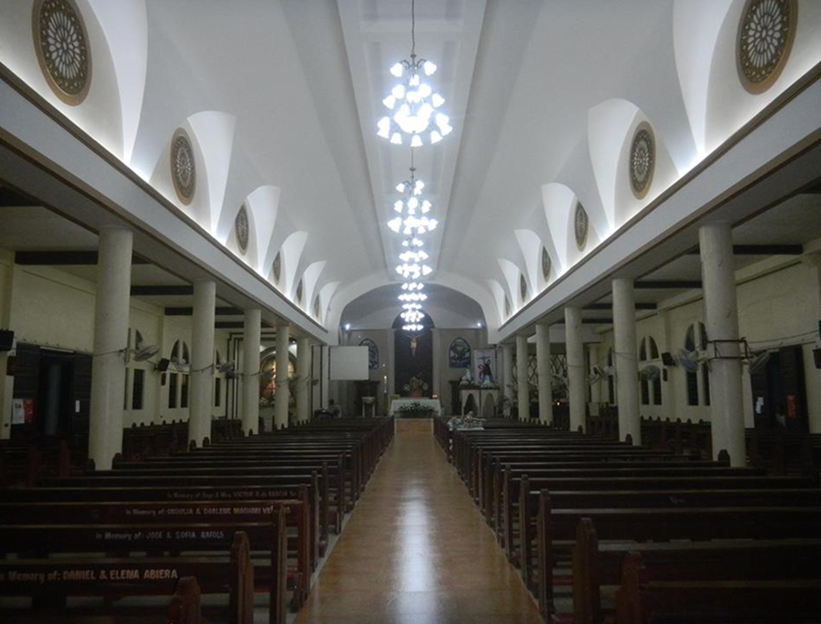
Sibalom was founded as a Parish in 1737 with Sta. Lucia as Patron Saint. In 1740, it was assigned a Priest of its own and having Bugasong as its visita until 1745.
In 1745, Bugasong became an independent Parish and Sibalom was administered by the Priest from Hamtic until 1753. In 1753, Sibalom became an independent Parish with Fr. Santiago Rodriguez as its first parish priest.
The Parish in Sibalom was the richest Parish in the Province during the Spanish Period from the middle of the 18th century onwards. Indicative proofs of this are the five big early Spanish era bells. To have a church bell during that period was expensive.
After opening its first mission in Iloilo, the Oblates of St. Joseph were invited by Msgr. Raul Jose Quimpo Martirez, bishop of the Diocese of San Jose, Antique to administer this parish in 2001. Rev. Fr. Delbert Jardinaso, OSJ was appointed as the first OSJ parish priest with Fr. Ferdinand Jauod, OSJ as parochial vicar.
But this was short-lived. In 2005, the Province closed the mission.

In memory of her son‘s wife, Rose, who died of cancer and as an offering to God, Mrs. Rosario Jacinto donated a 1,250 square meters of prime land along Gregorio Araneta Ave., cor Kaliraya. in Quezon City in 1989 to establish any charitable institution .
Mrs. Felicidad L. Viray, a retired Regional Director Of the Bureau of Internal Revenue and Fr. Sonny G. Ramirez, OP, then conceptualized the establishment of a Foundation that will render services to the society‘s defenseless members, the streetchildren. Their endeavor was strongly supported by professional, socio−civic religious leaders whose vision is to improve the quality of life of Filipino streetchildren.
Since its inception, the personnel have been assisted by the Missionaries of the Child Jesus (MCJ) Sisters. Due to the demads for a close supervision of the children the board of directors decided to turn over the administration of the center to a male religious congregation, the Oblates of St Joseph. Fr. Gerardo Yabyabin, OSJ was appointed and acknowledged as the center‘s new Program Director. He was assisted by Br. Anthony Casipe, OSJ as House Economo.
However due to some legal constraints in the renewal of the agreement between the Province and Foundation, the Provincial Council had no other recourse but to give up its administration and supervision of Silong Tanglaw on May 1, 2012.
